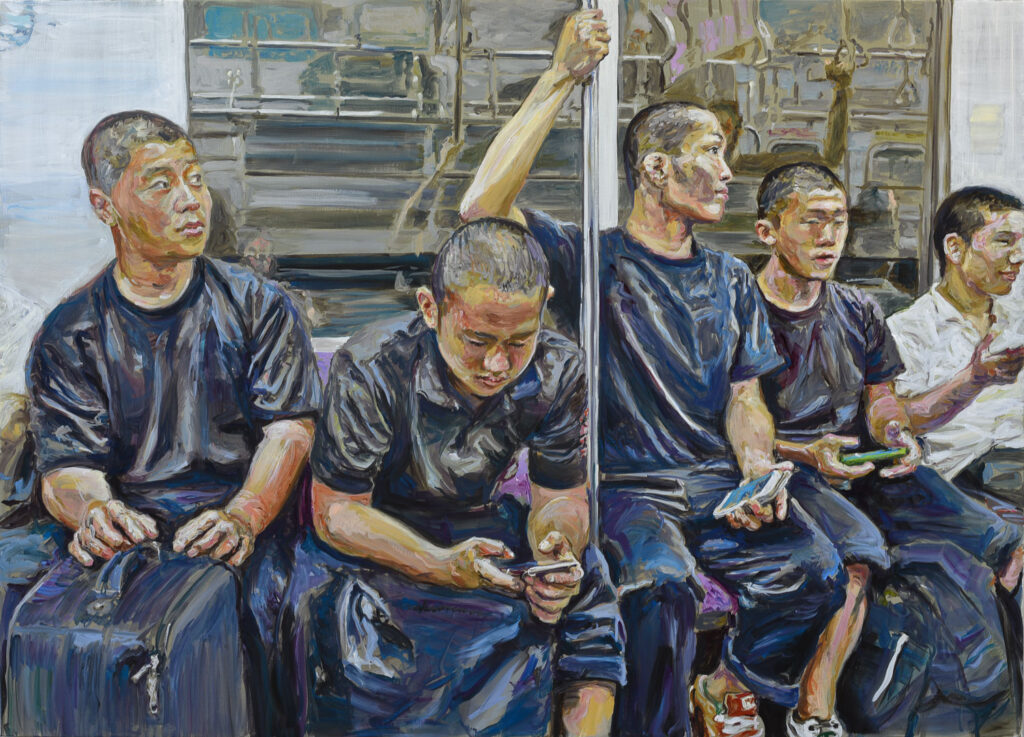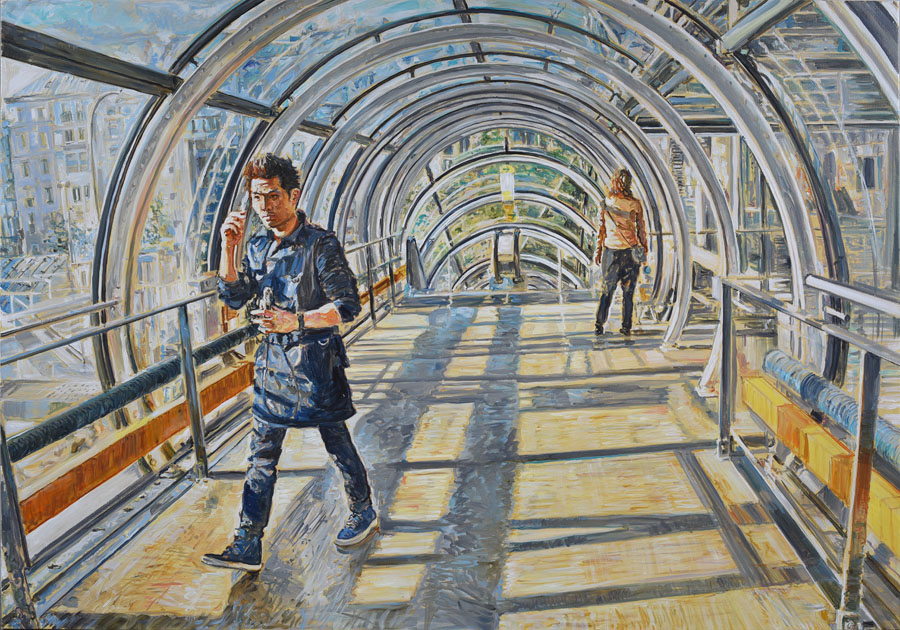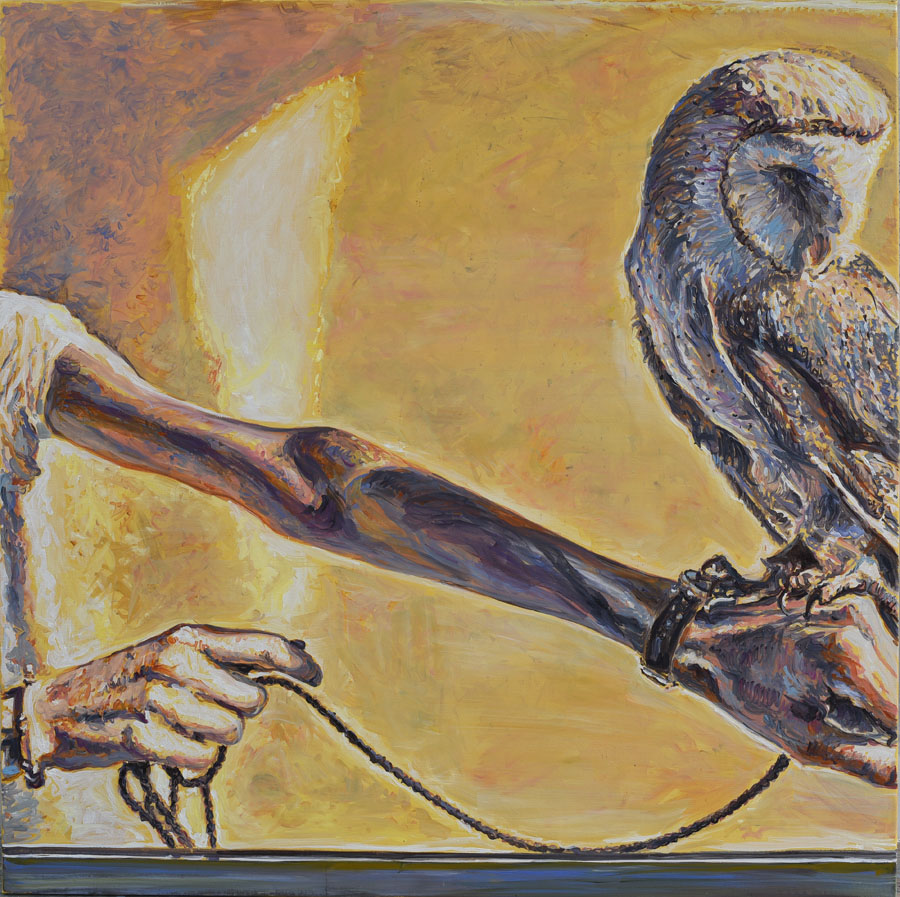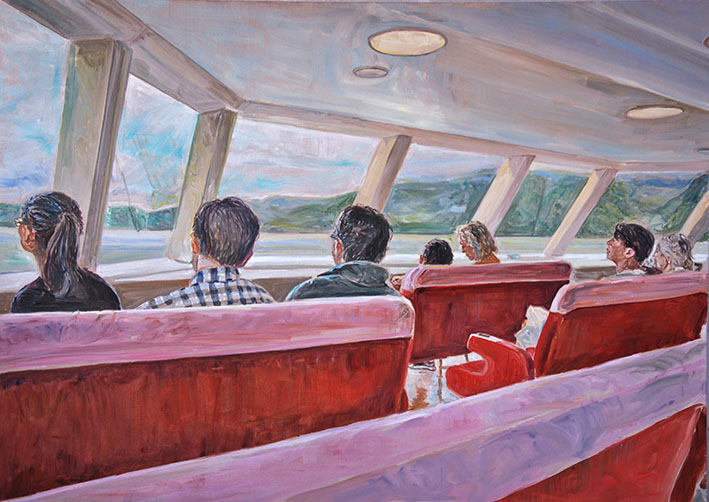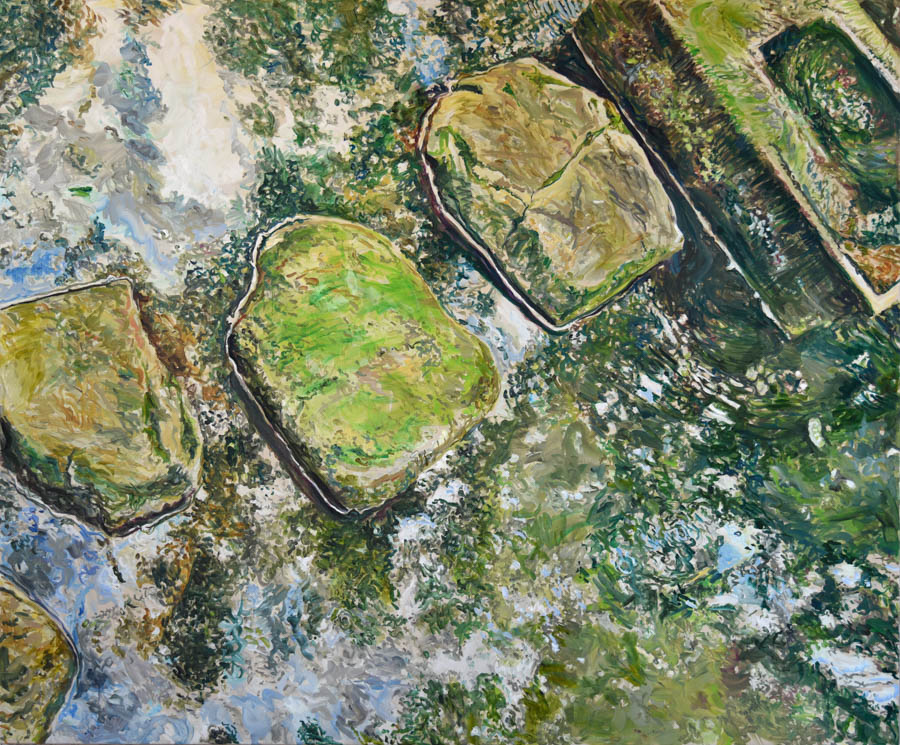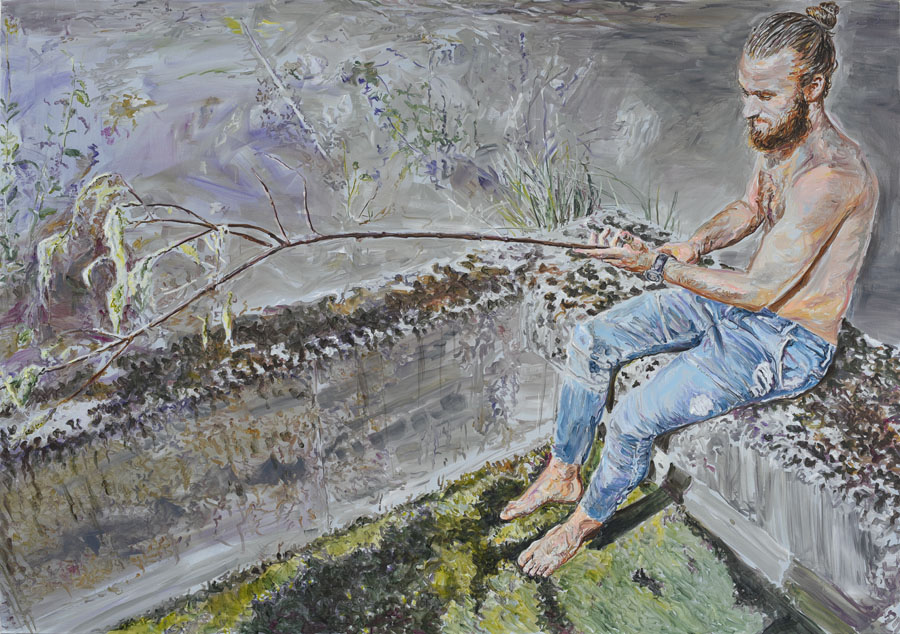
Luc Dondeyne
Luc Dondeyne toont zich niet enkel als doorvoelde observator van de (hem omringende) werkelijkheid als schilder, maar tevens – en dit is minstens even belangrijk – als een diepgaand kijkend onderzoeker naar de kunstgeschiedenis, en dit vanuit een persoonlijk relevante, selectieve invalshoek. In zijn veelvuldig bezoeken van tentoonstellingen, lezen over hedendaagse (schilder)kunst, etc. lijkt hij immers geen genoegen te nemen met een louter informatieve nieuwsgierigheid naar relevante ontwikkelingen binnen die hedendaagse kunst, maar is hij tevens met een scherp bewustzijn op zoek naar zijn eigen schilderkundige pedigree.
Die selectieve doorgedreven zoektocht lijkt zelfs ideologische trekken te krijgen, in de zin dat Dondeyne steeds probeert door te stoten tot de fundamentele ideologie van zijn eigen subjectief ervaren artistieke voorgeschiedenis, er zich volledig van te doordrenken, om diezelfde ideologie dan nadien in zijn werk des te overtuigender een kanjer van een inhoudelijke hak te zetten. In die zin heeft Luc Dondeynes artistieke levenswandel van de laatste tien jaar wel iets van een gefocust maar gezwind ‘kill your darlings’-parcours ten opzichte van zijn eigen, zorgvuldig geobserveerde kunstgeschiedenis. Gefocust omwille zijn doordachte welbewustheid, gezwind omdat hij dit nooit zonder een vette streep humor doet…
[Thibaut Verhoeven]
For english text scroll down.
2025


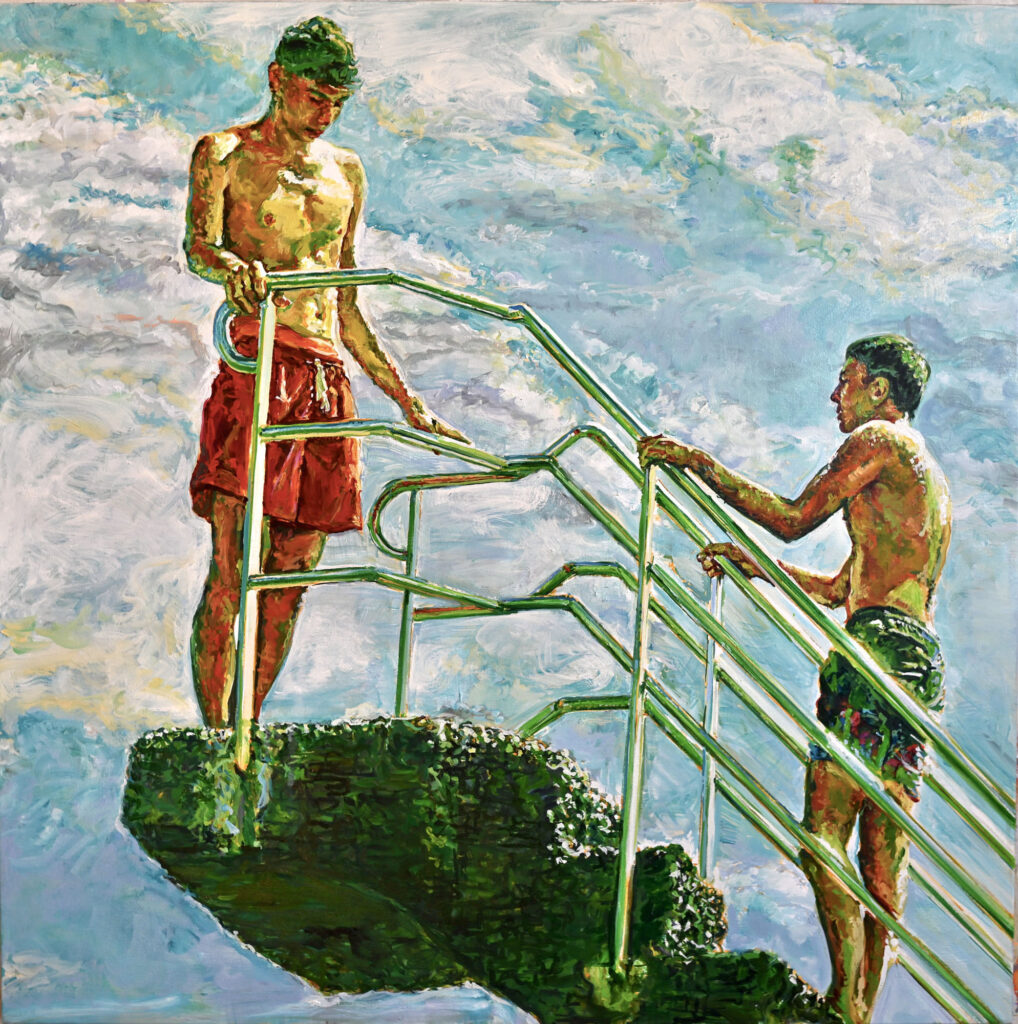

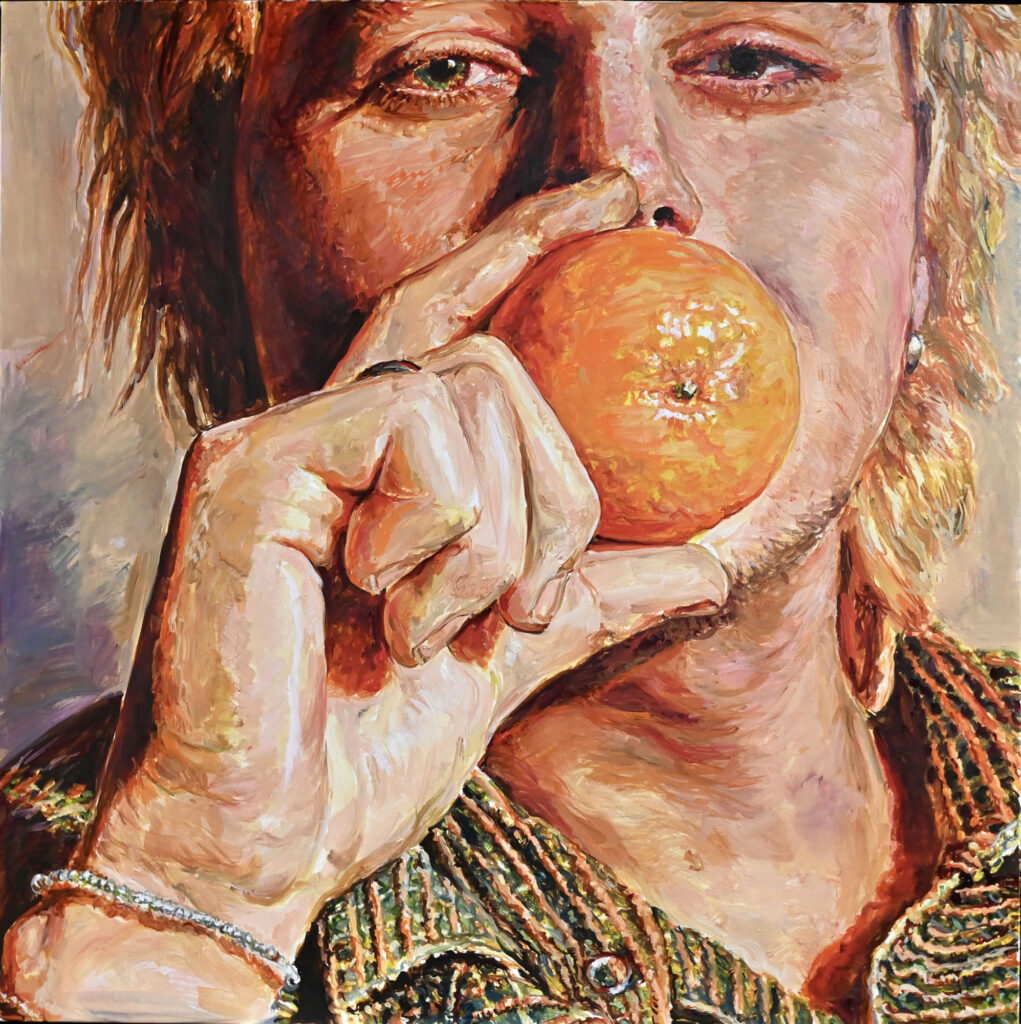

2024 ITS NOT ME, Exporuimte De Halle, CC de Werft Geel, 15.09 – 01.12.2024
UITNODIGING
Je wordt vriendelijk uitgenodigd voor de finissage van de tentoonstelling op
zondag 1 december van 11 tot 17 uur.
Luc Dondeyne schildert de mens in veel verschijningsvormen. Verhevigd, kleurrijk, erotisch. Hij fotografeert wat om hem heen gebeurt. Hij kadreert scherp. Hij heeft vooral, misschien zelfs uitsluitend, oog voor de ‘leisure society’ van de 21ste eeuw, een samenleving waar een oppervlakkig hedonisme tot maatstaf is verheven.
In zijn schilderijen zijn mensen niet aan het werk, maar sporten, ontspannen zich, vermaken zich, mijmeren, … vaak zijn ze toeschouwers. Dondeyne zoomt in op individuen, verzonken in zichzelf, bezig met zichzelf. Als enkele personages samen voorkomen, is er opvallend genoeg geen onderlinge communicatie. Het zijn verstilde, ongemakkelijk stemmende beelden van een mensheid die zich oppervlakkig vermaakt. Door zijn schilderstrategieën brengt hij een net-nietwerkelijkheid in beeld.
[Eric Rinckhout, fragment tekst catalogus ‘Third Eye’]
Deze tentoonstelling wordt begeleid door een nieuwe catalogus ‘ITS NOT ME‘.
Open op vrijdag, zaterdag, zondag van 10u tot 17u.
EXPORUIMTE DE HALLE
MARKT 1 – 2440 GEEL
014 56 66 66 – www.dewerft.be
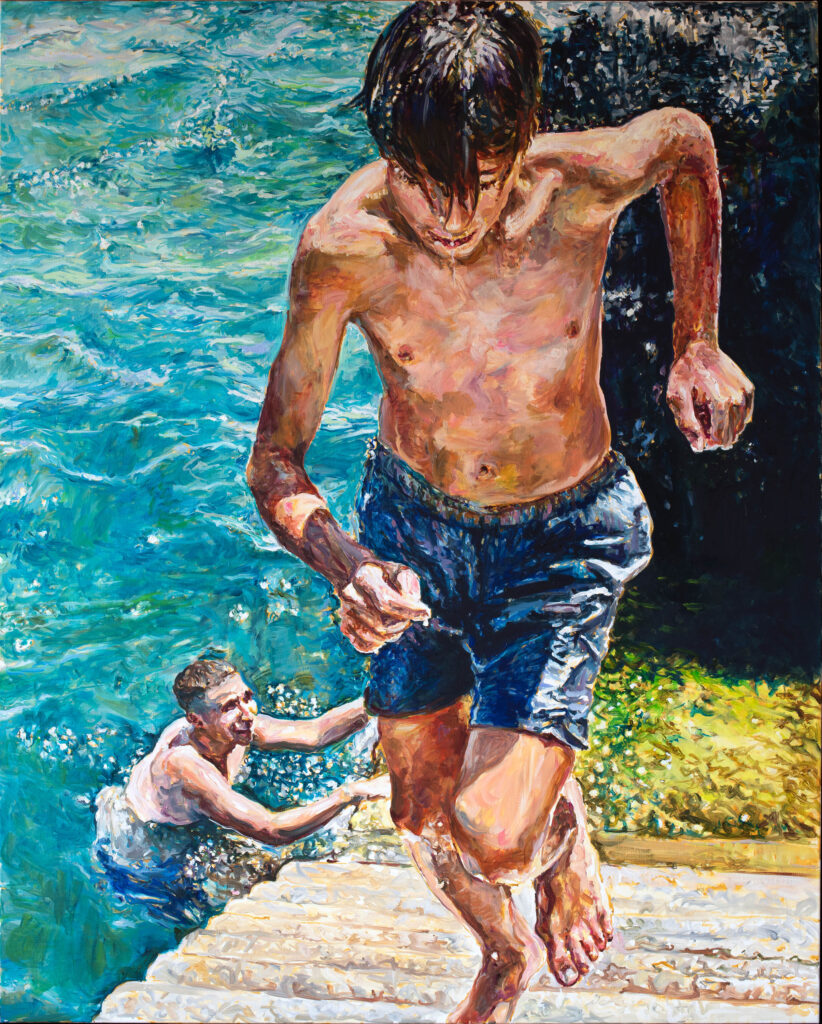
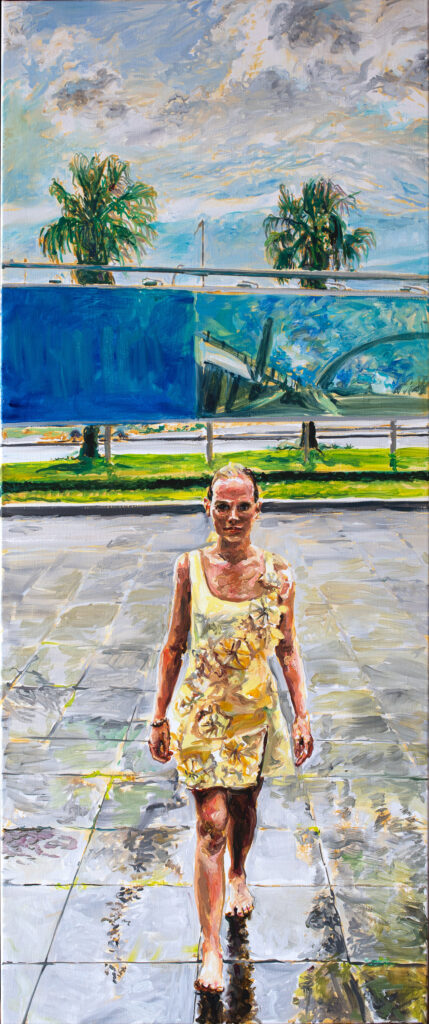
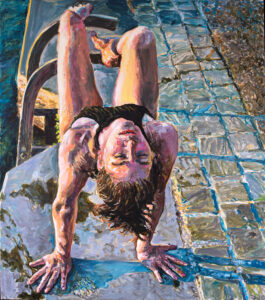
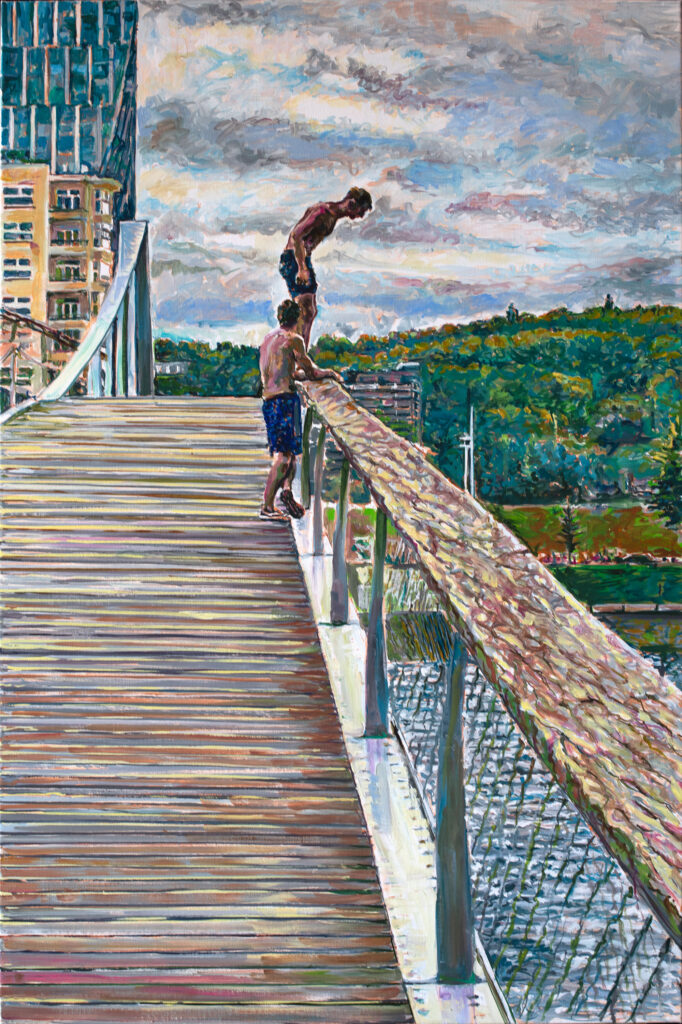
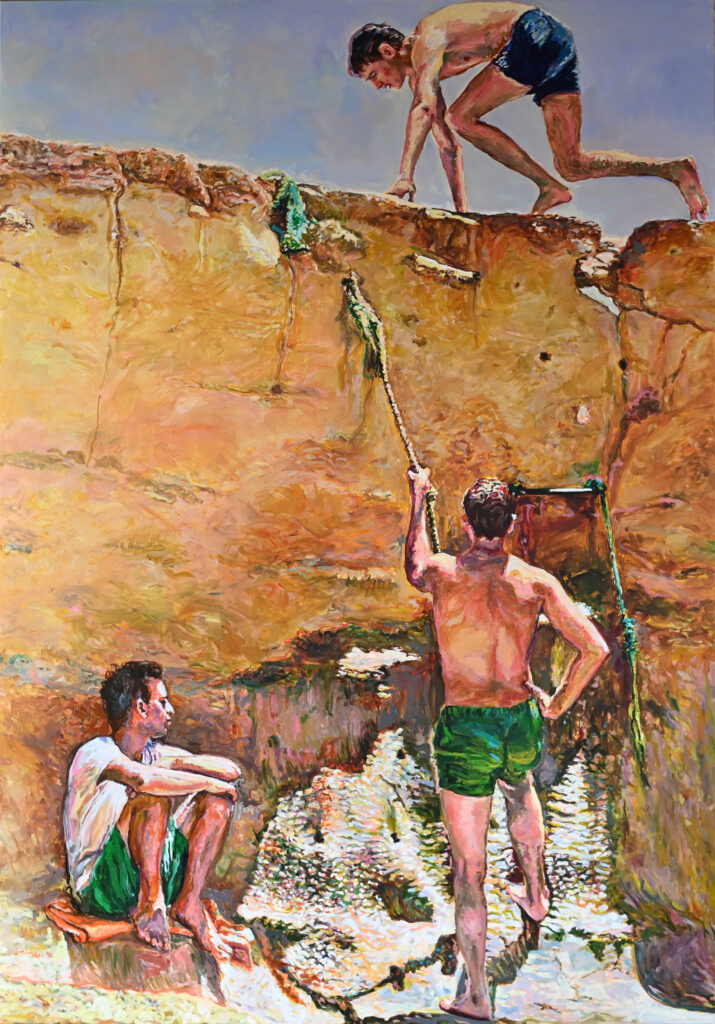
2023
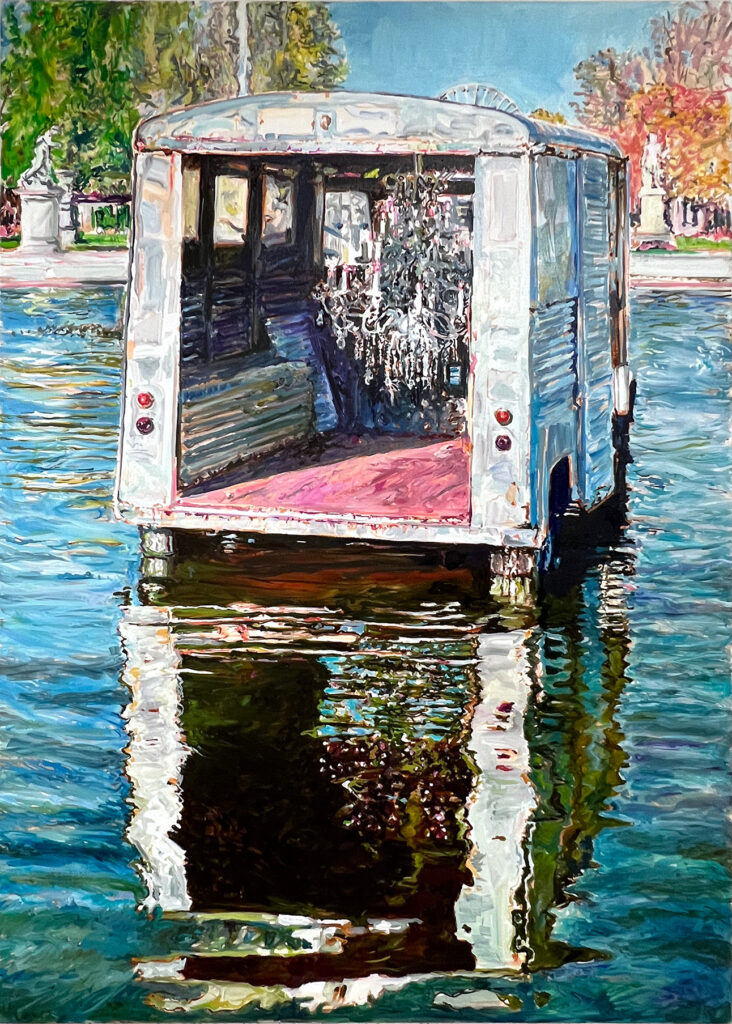
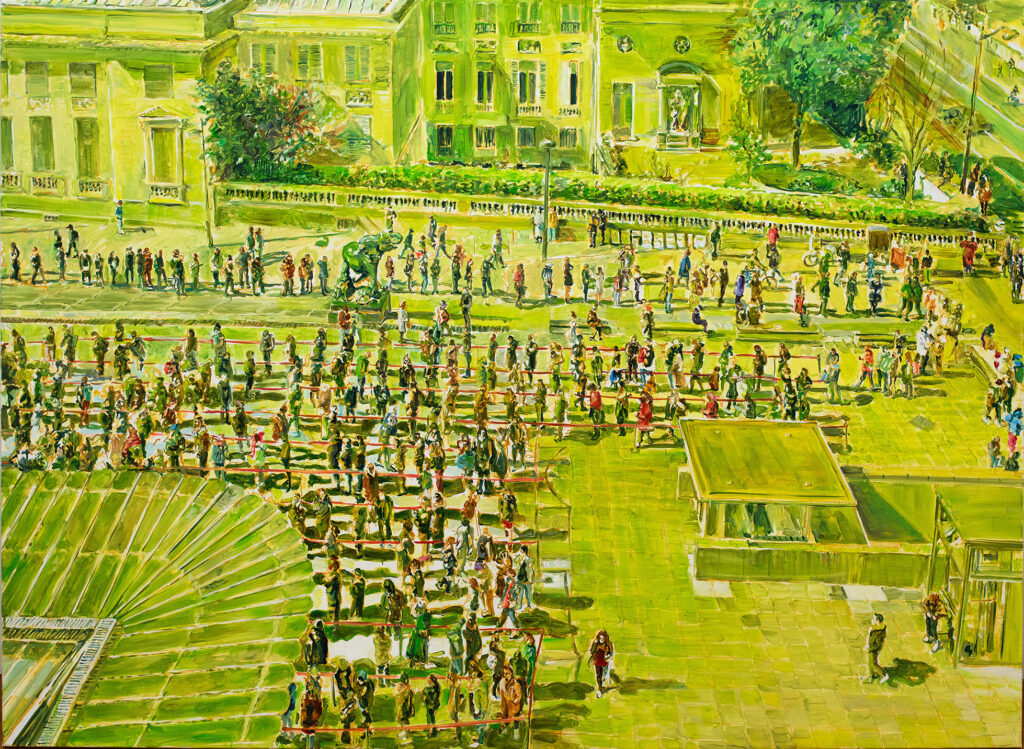
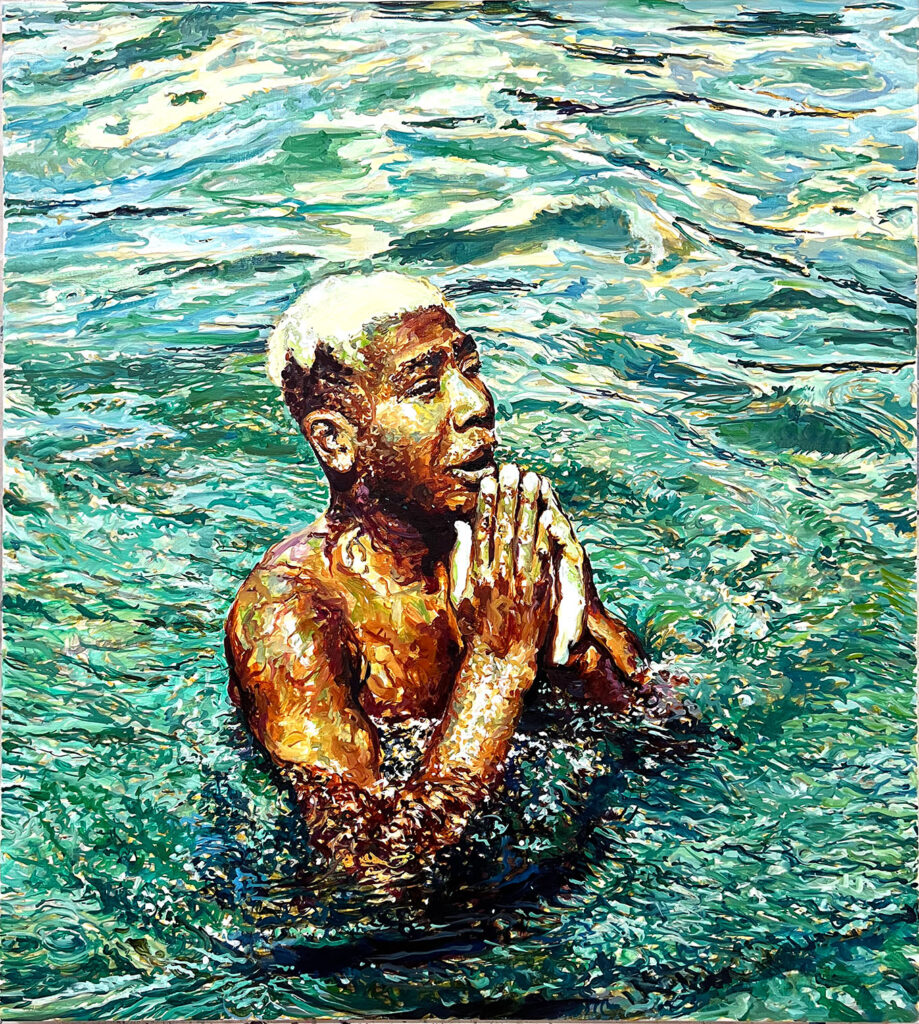
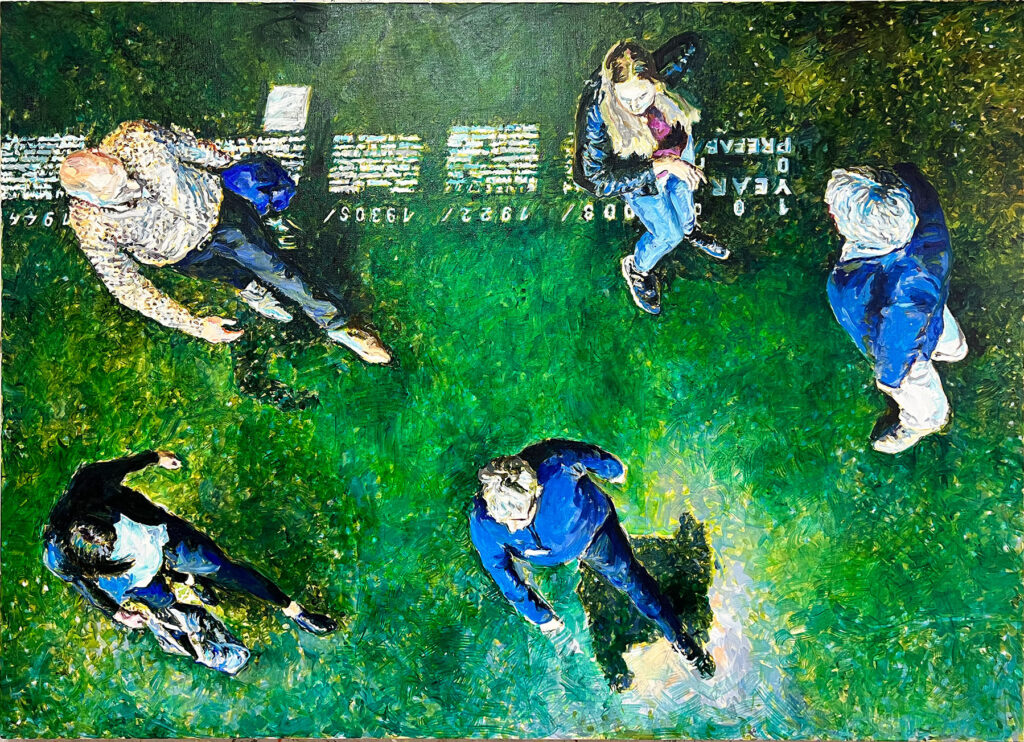
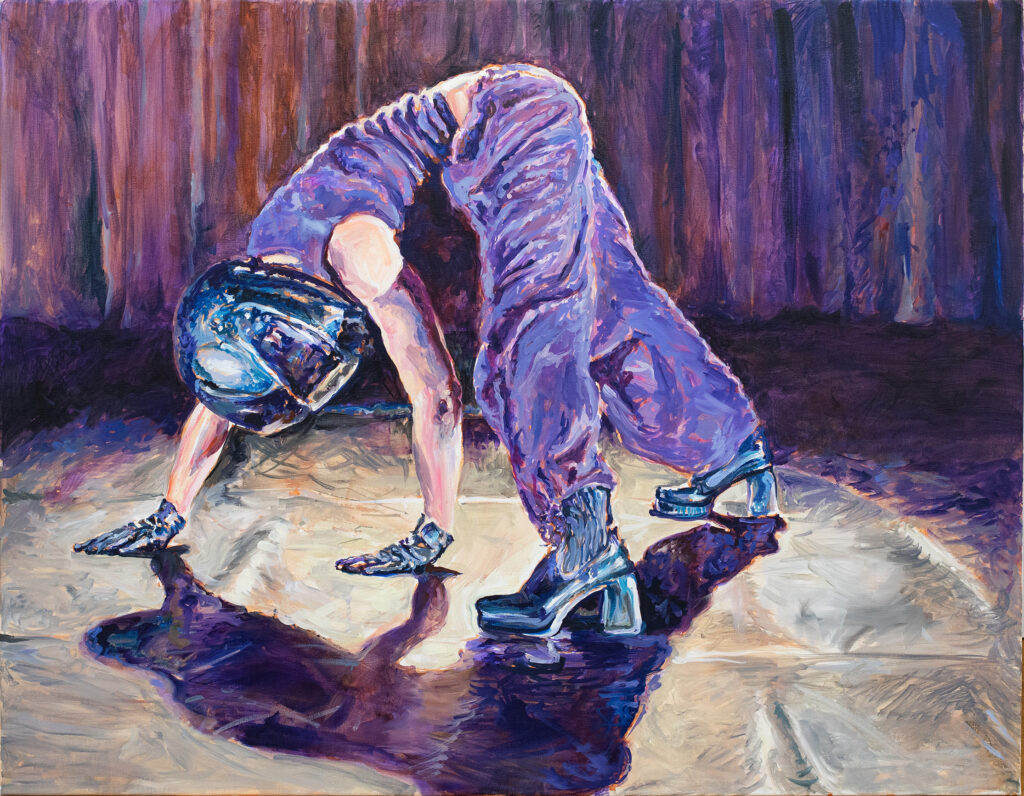
Swinging Mirrors 2022
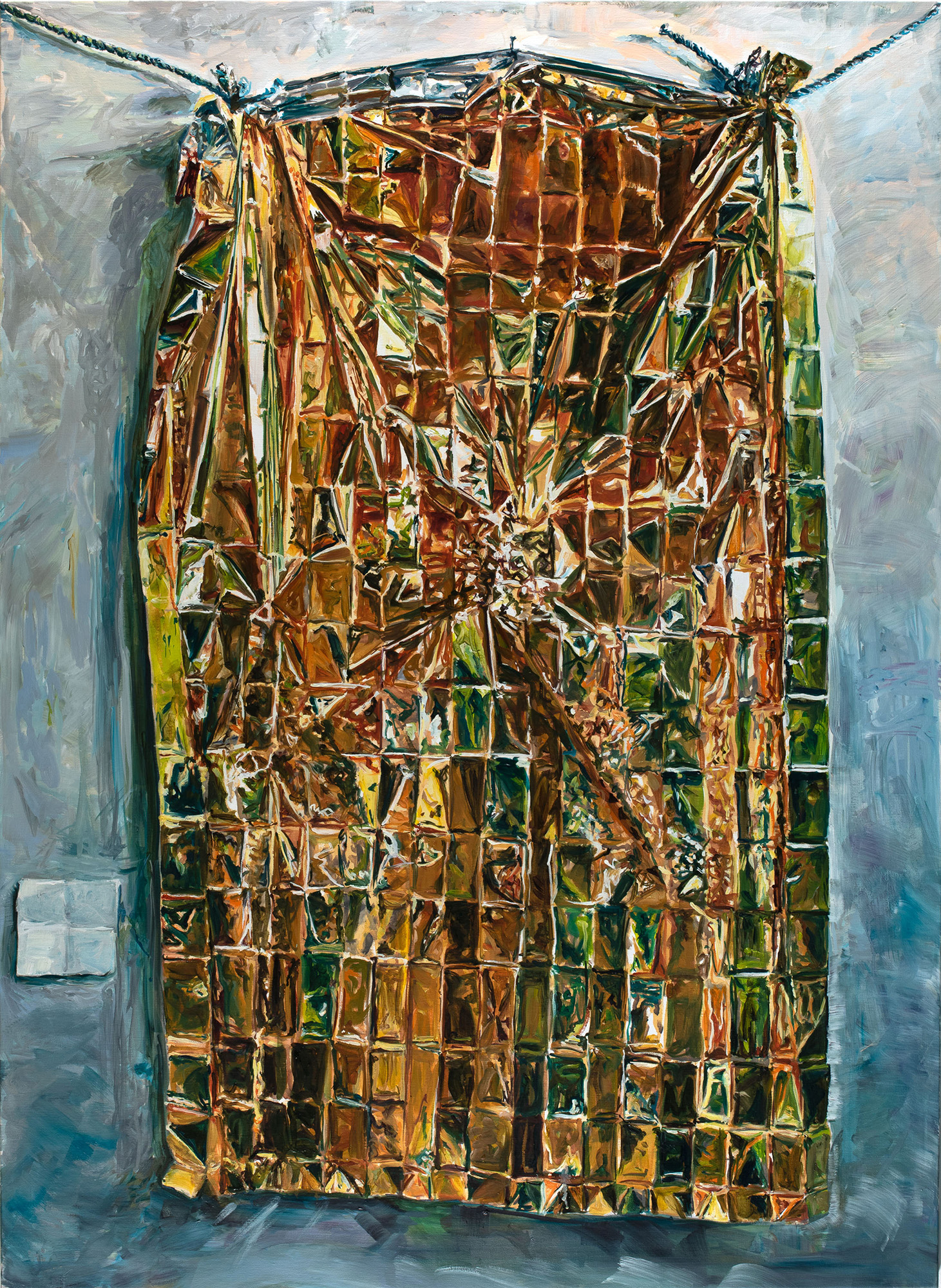
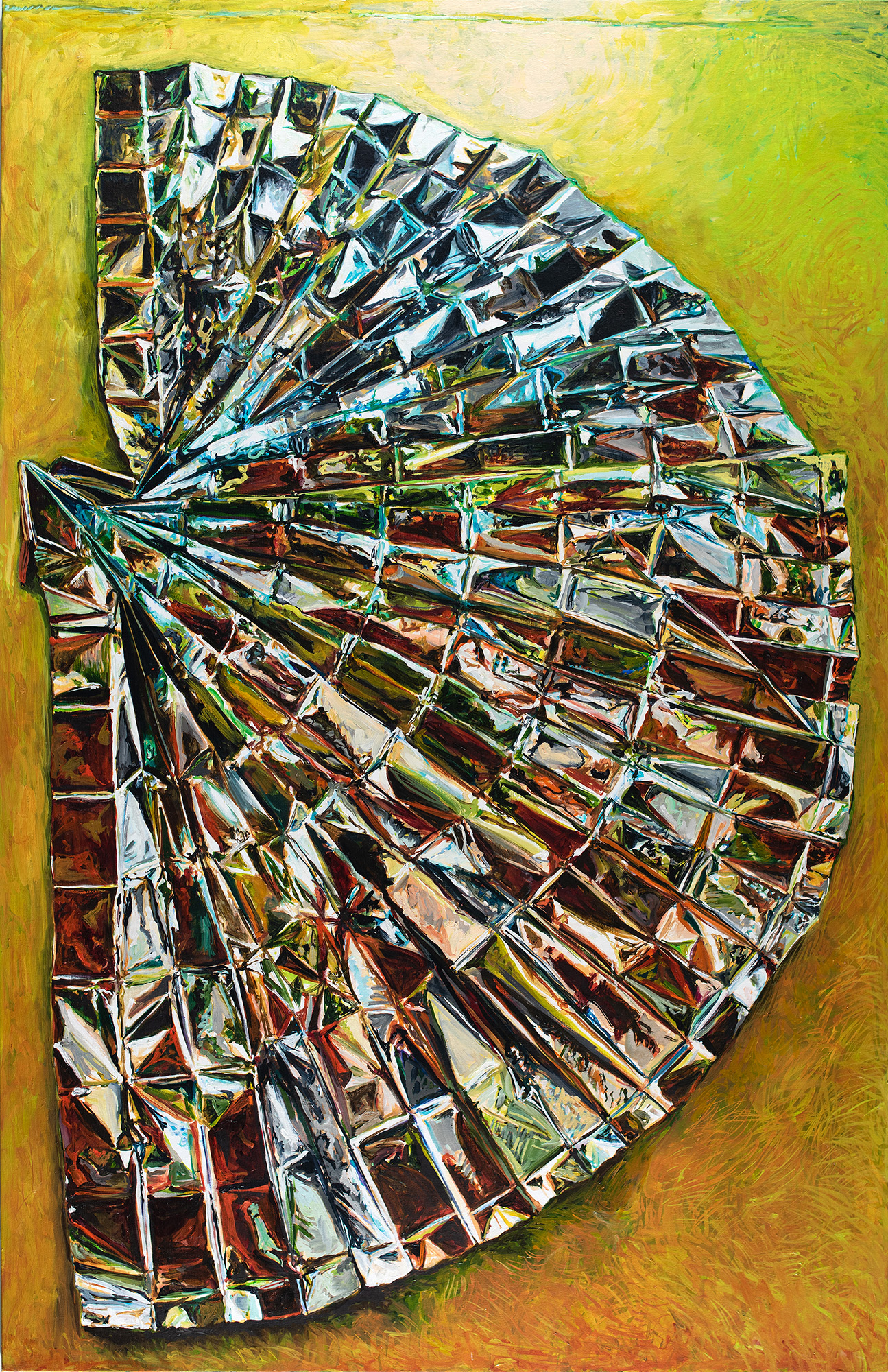
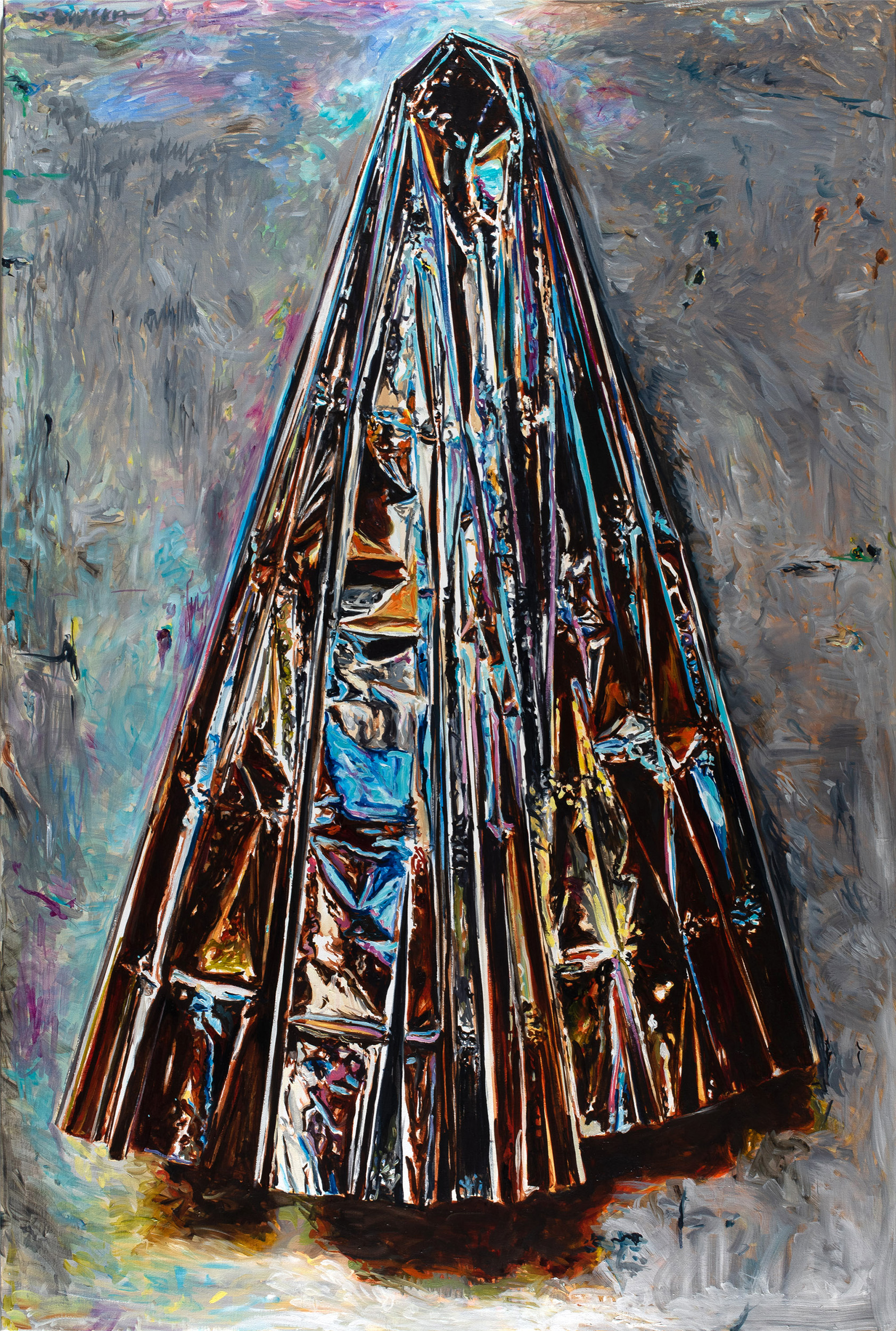
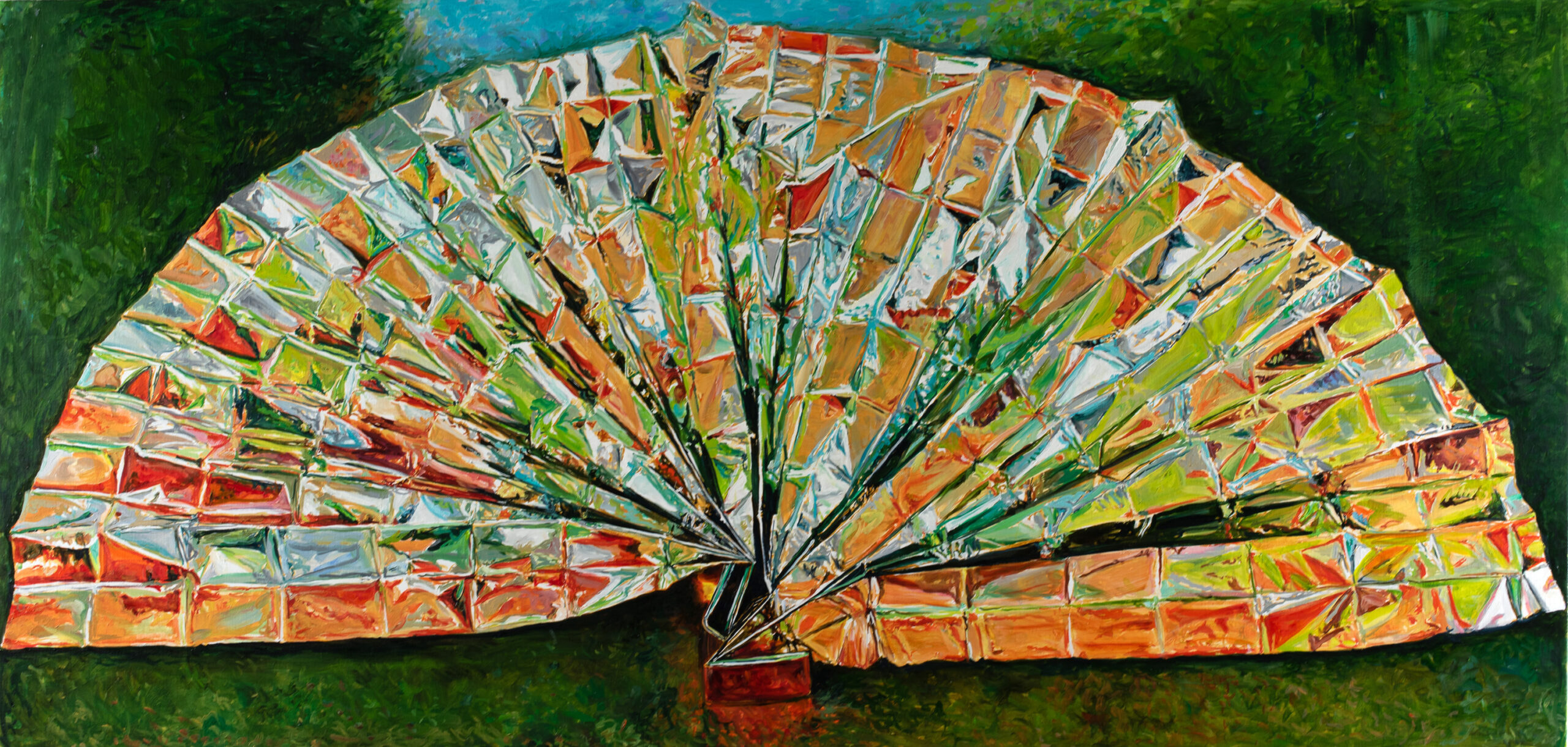
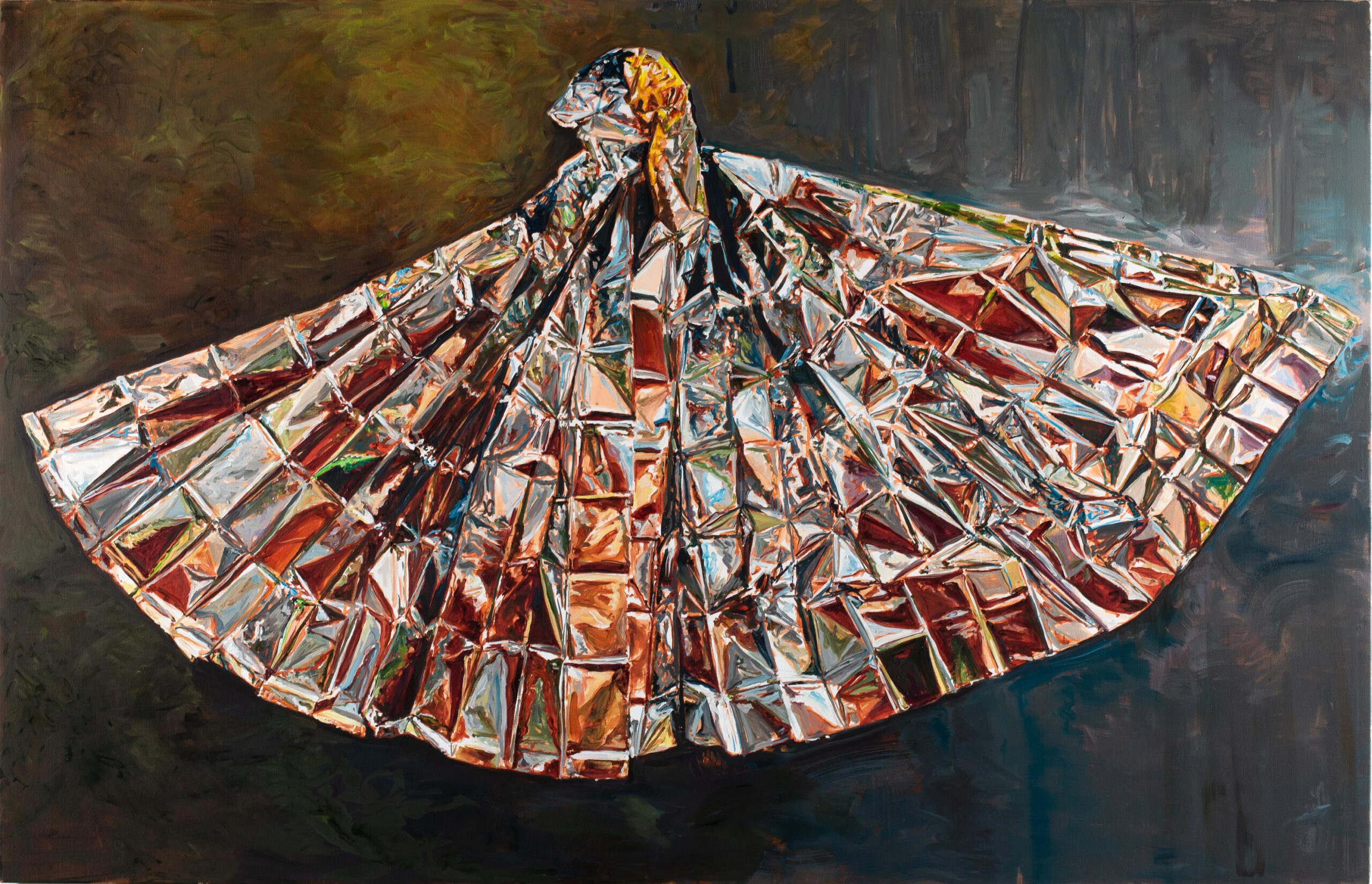
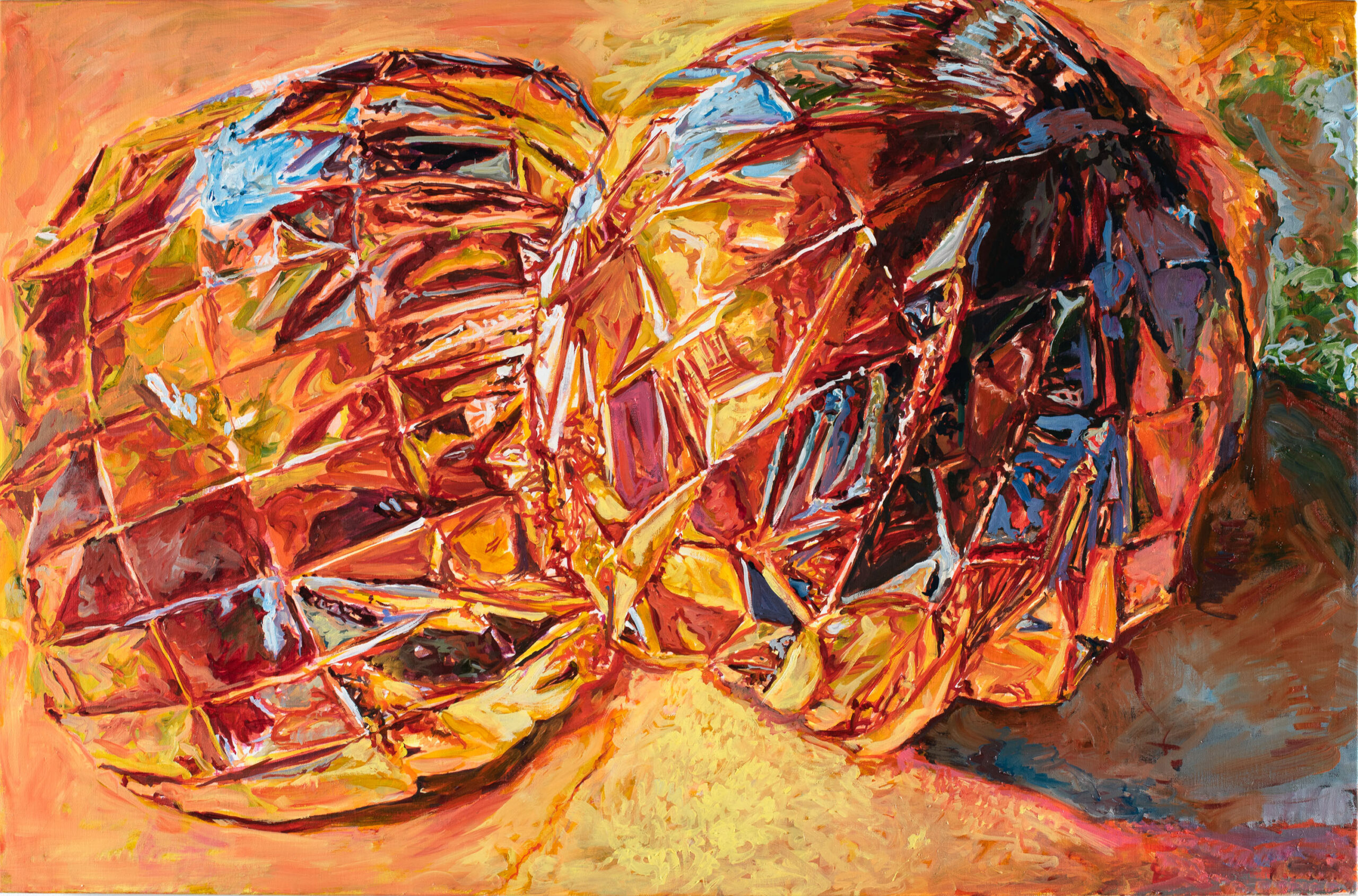
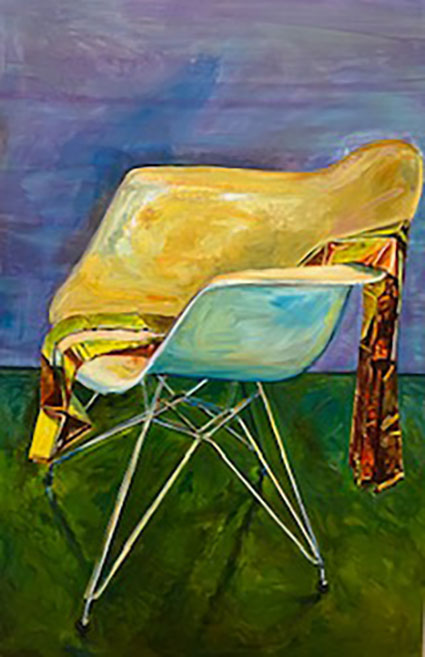
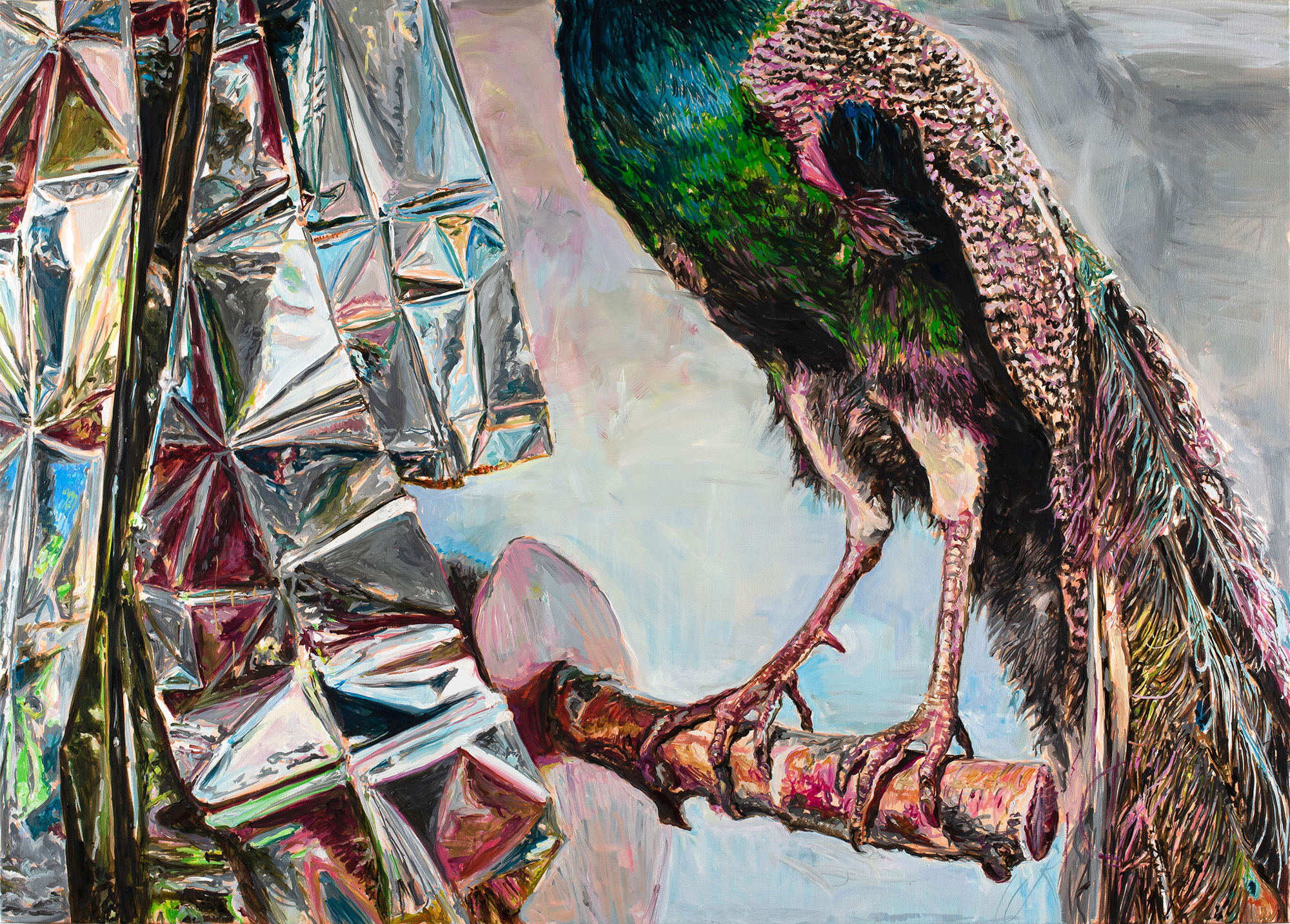
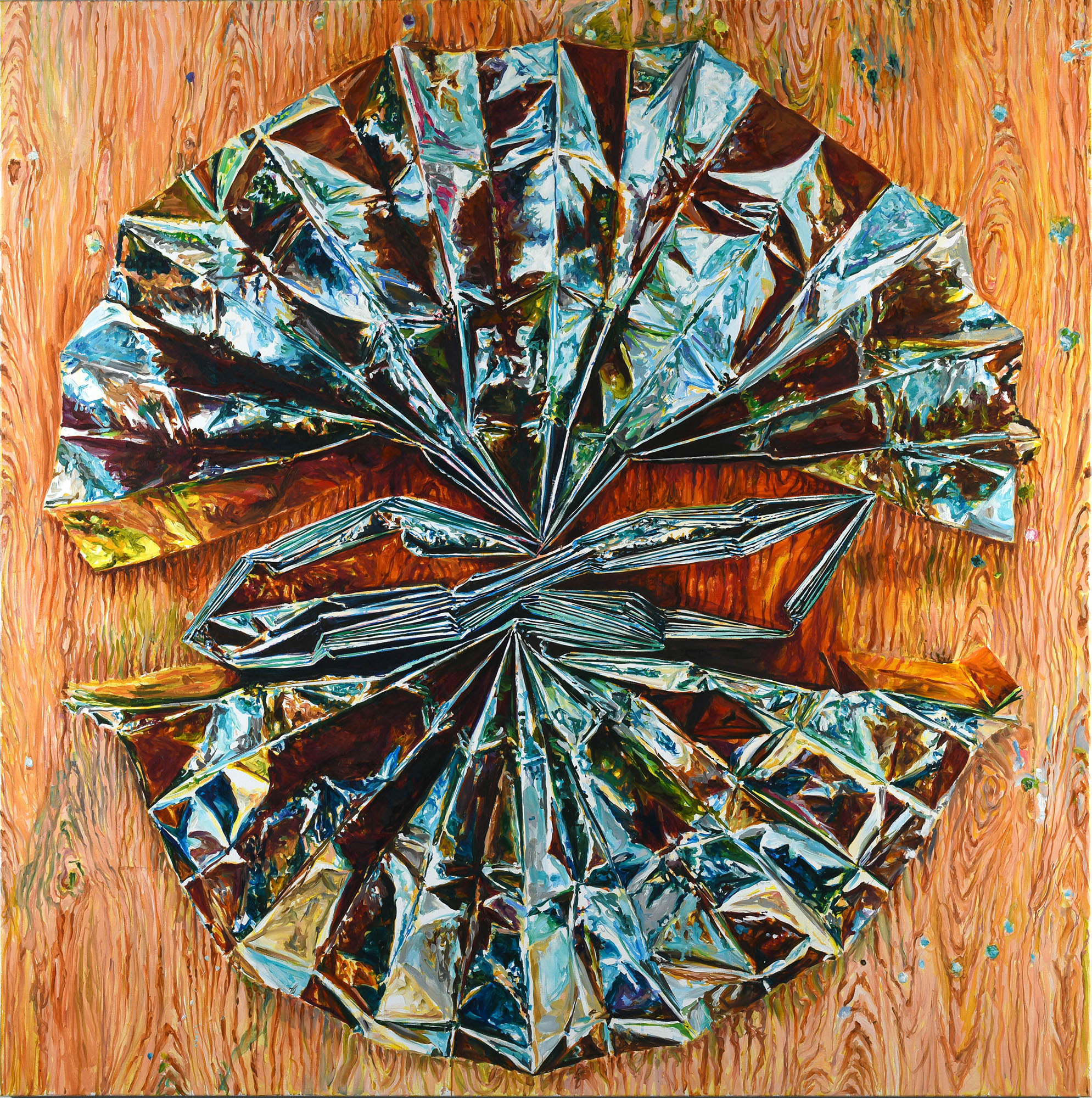
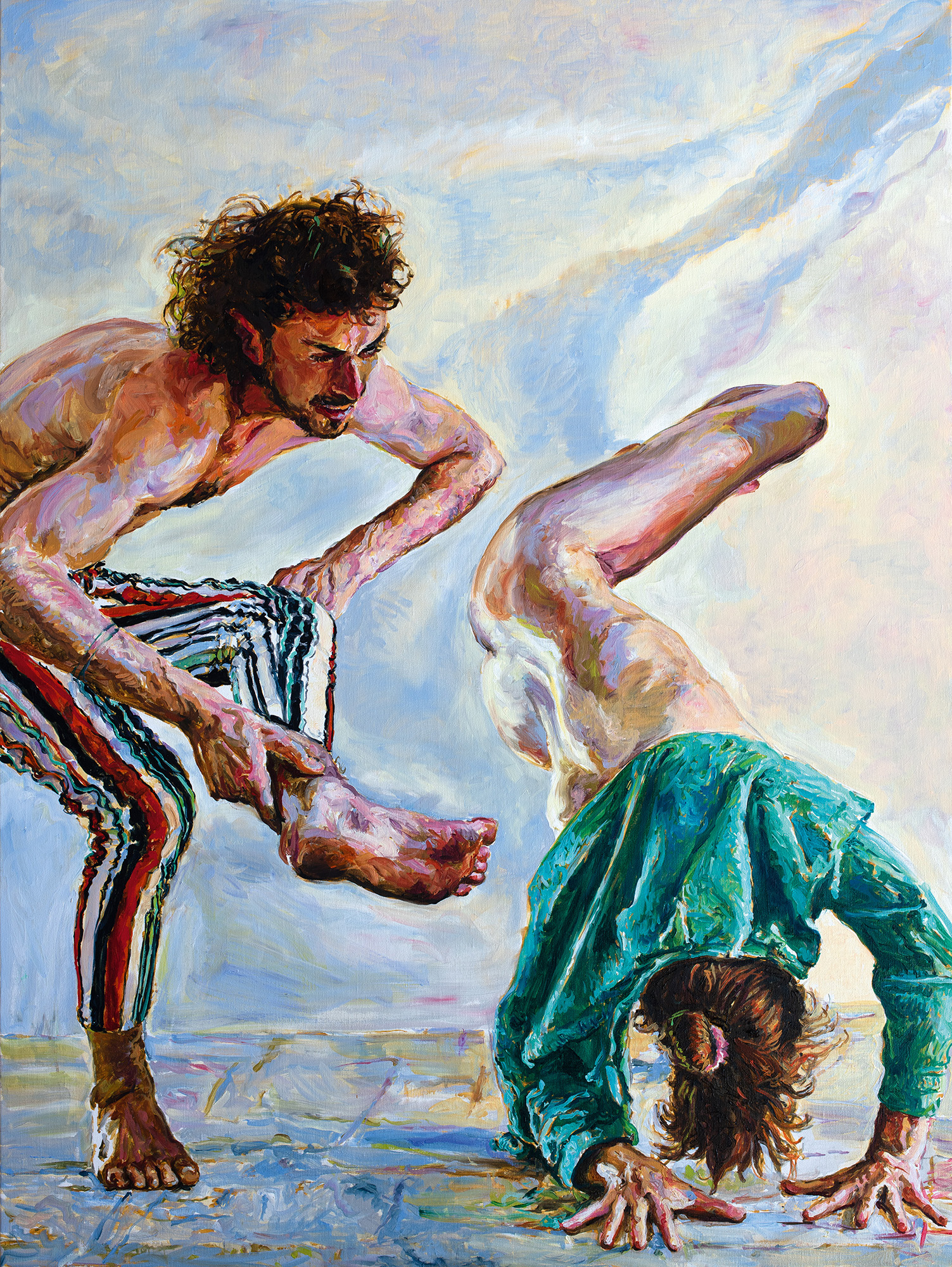
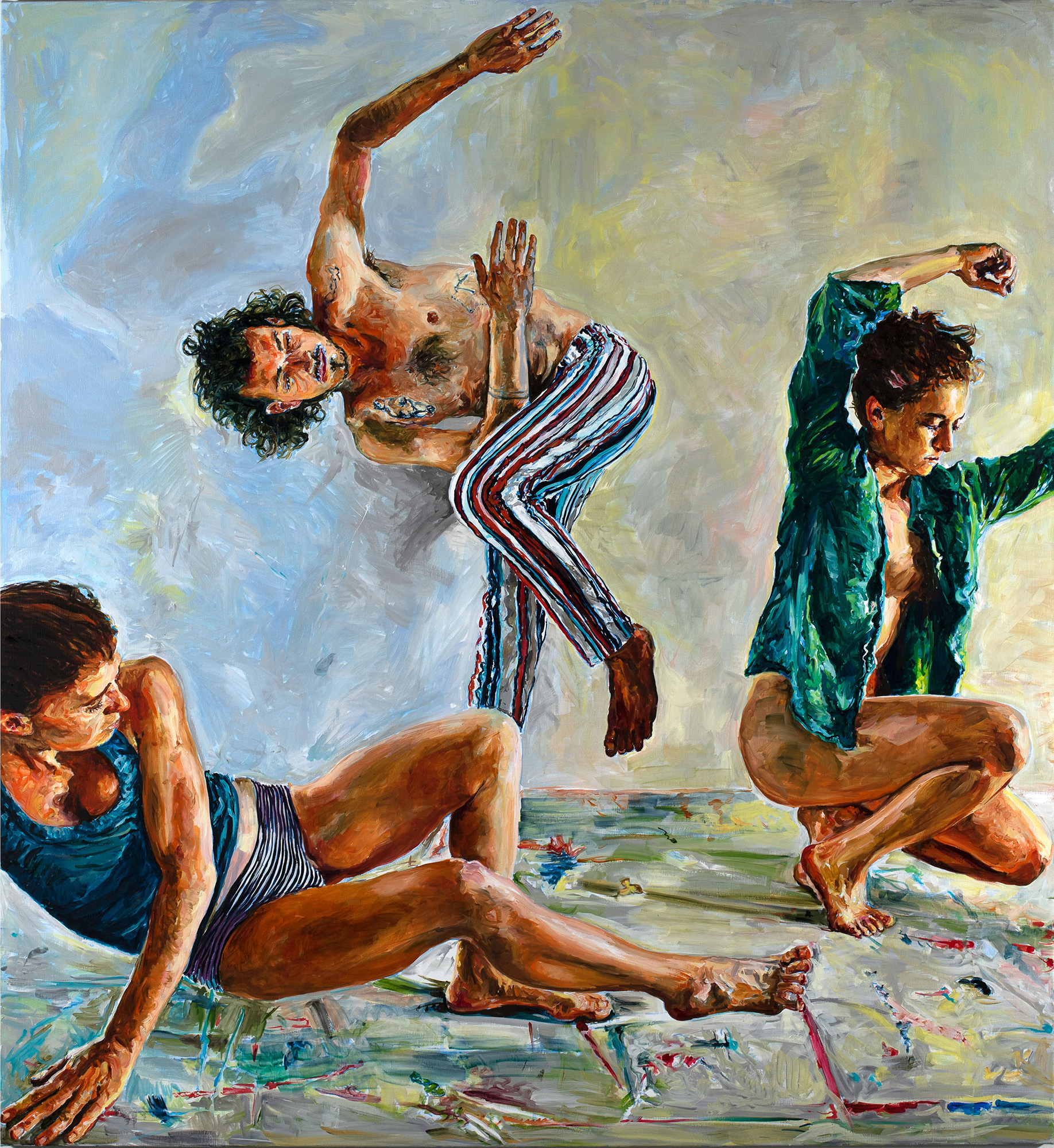
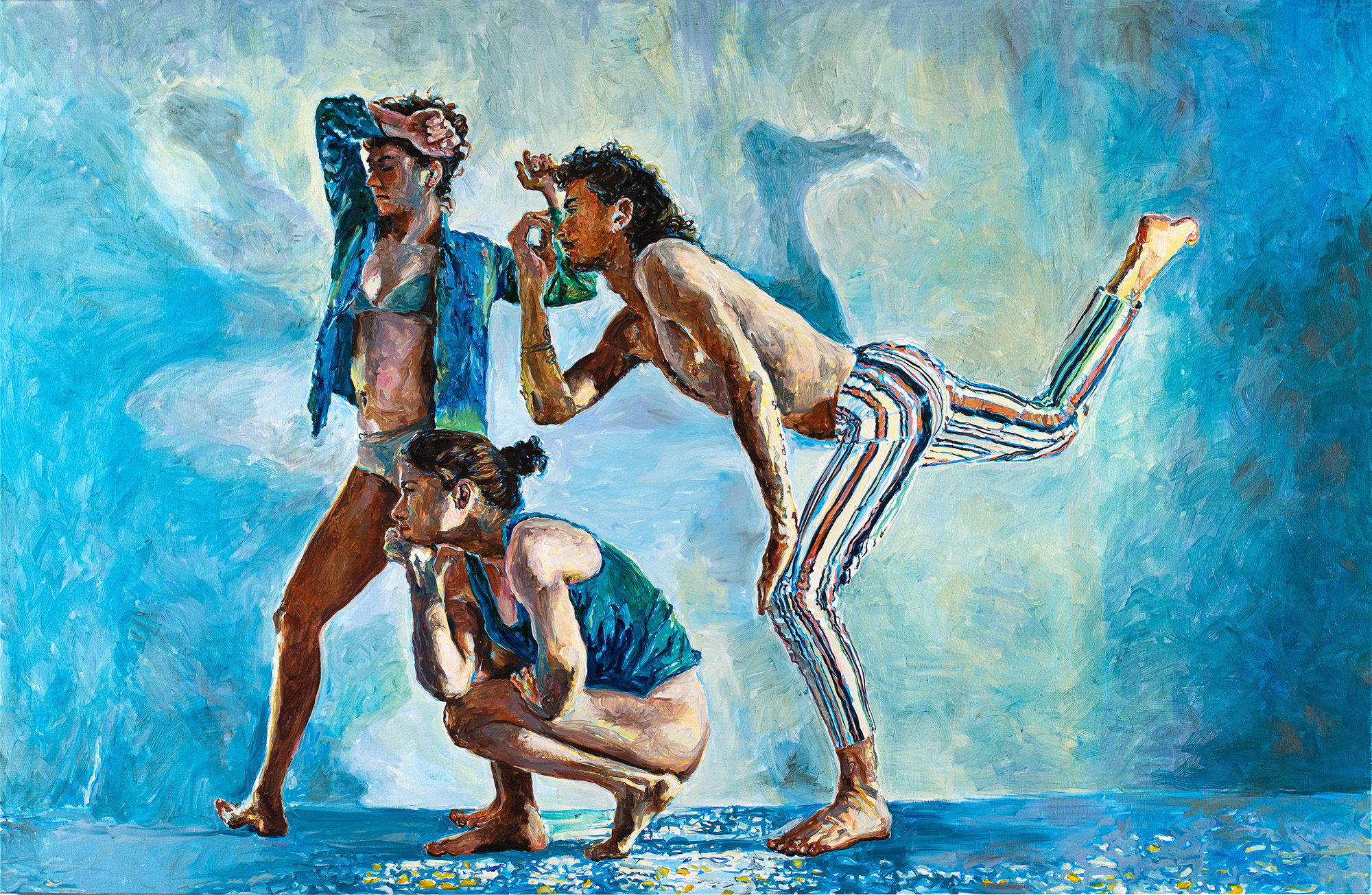
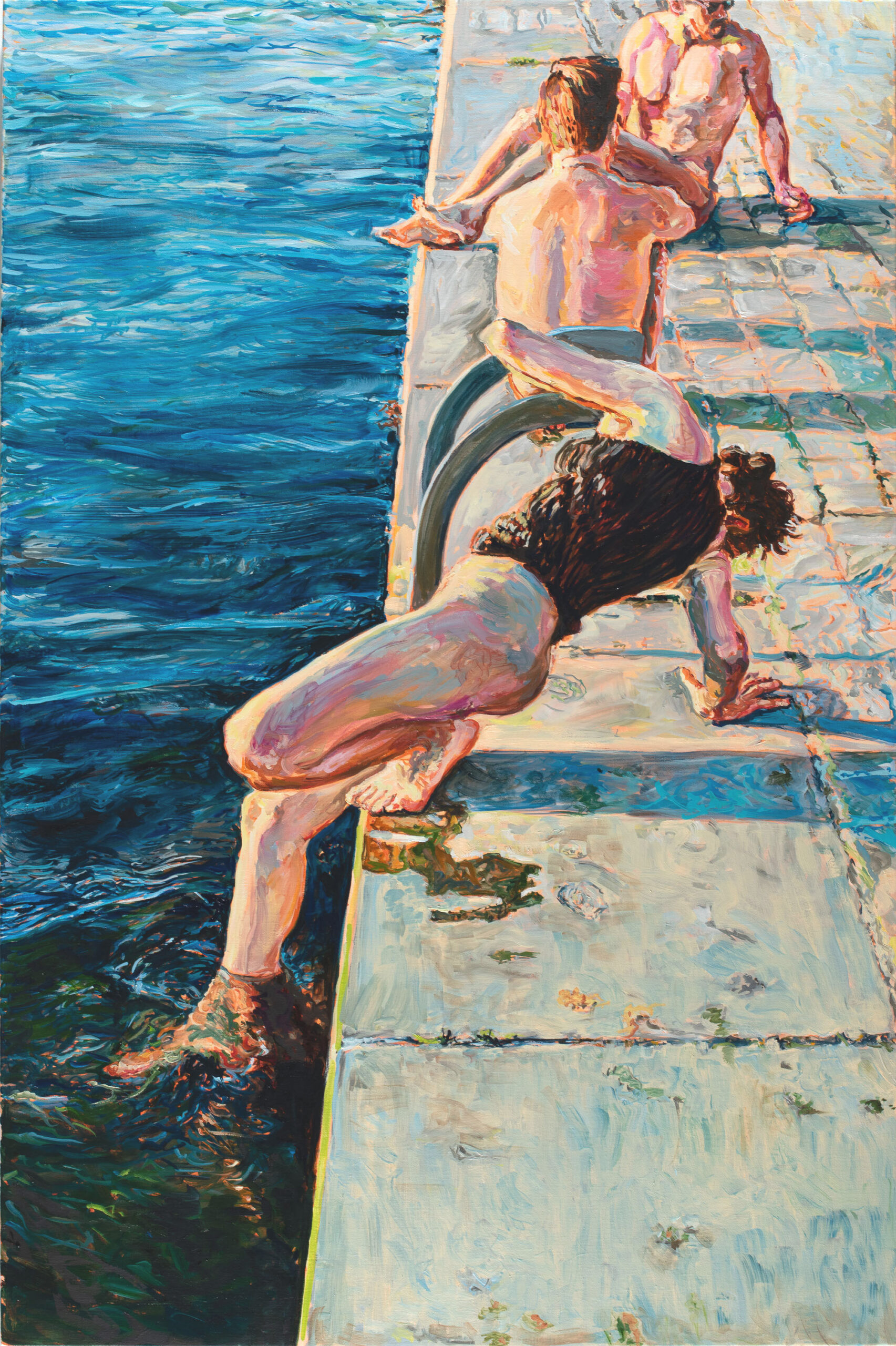
Art Antwerp 2021
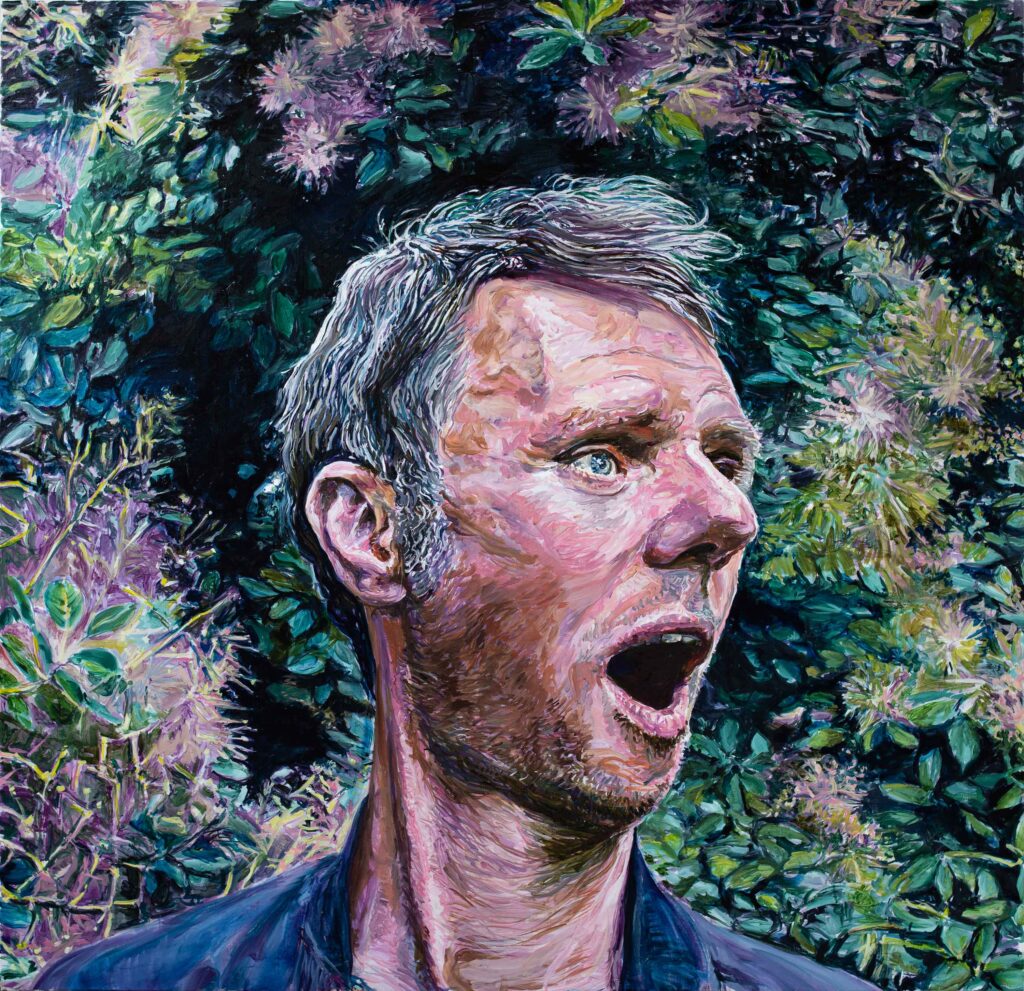
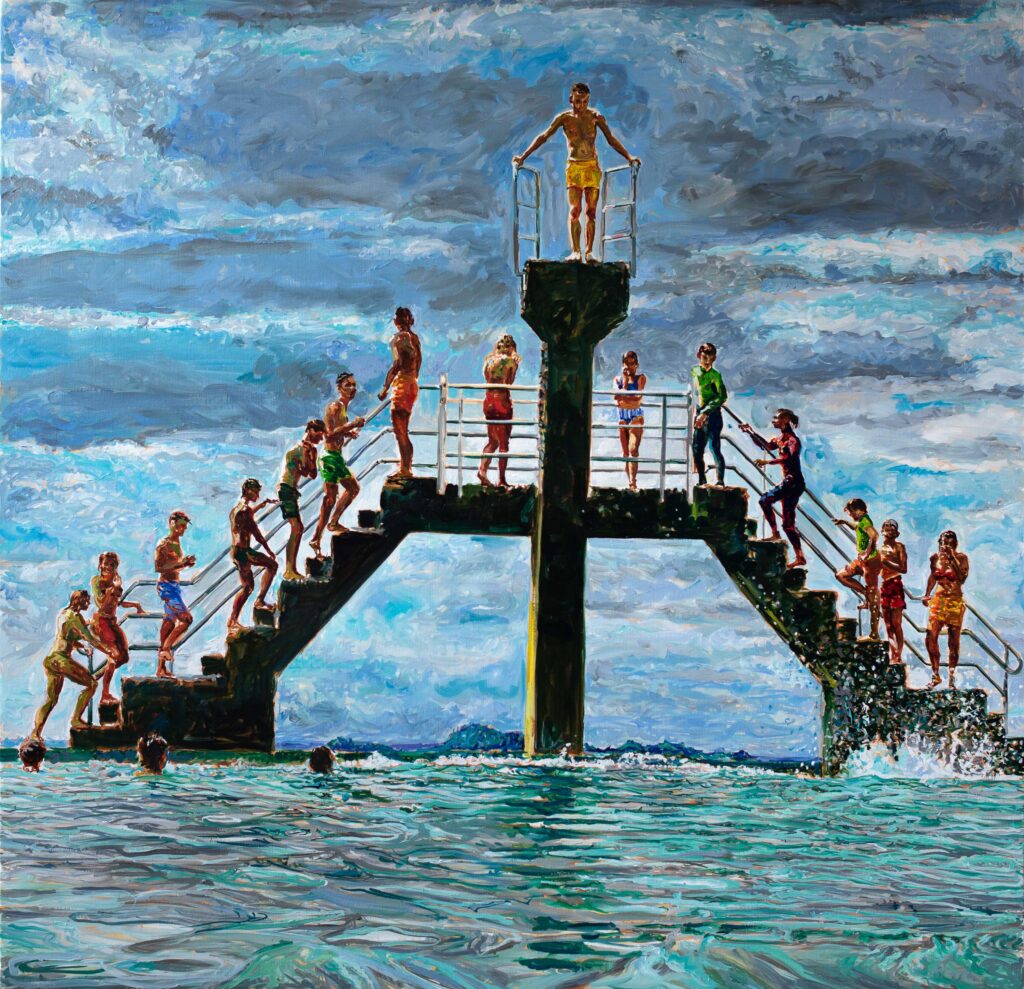
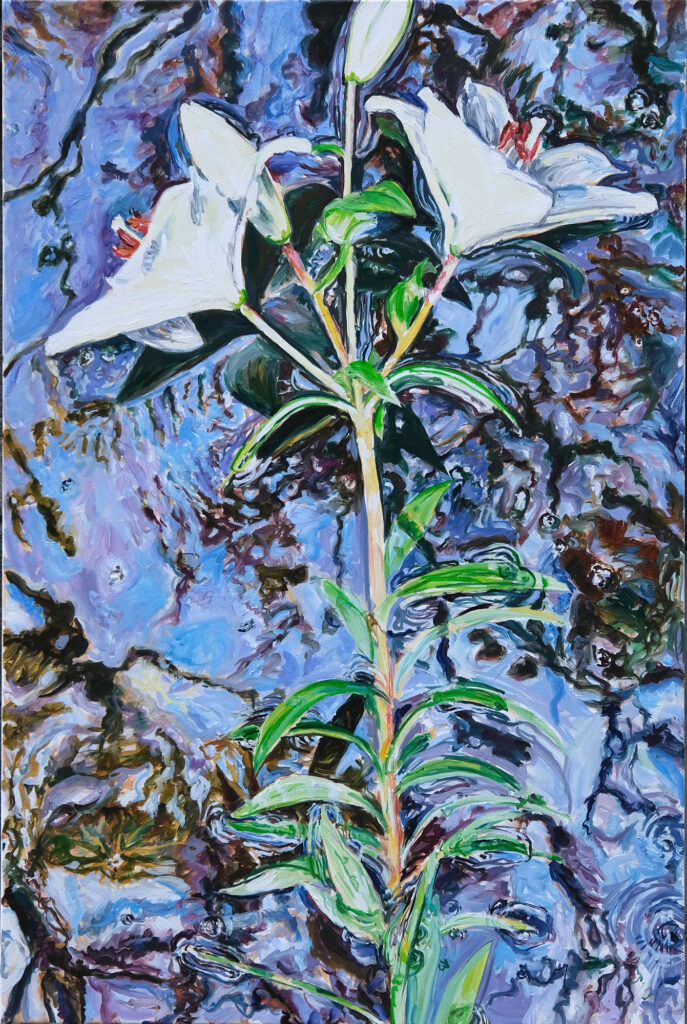
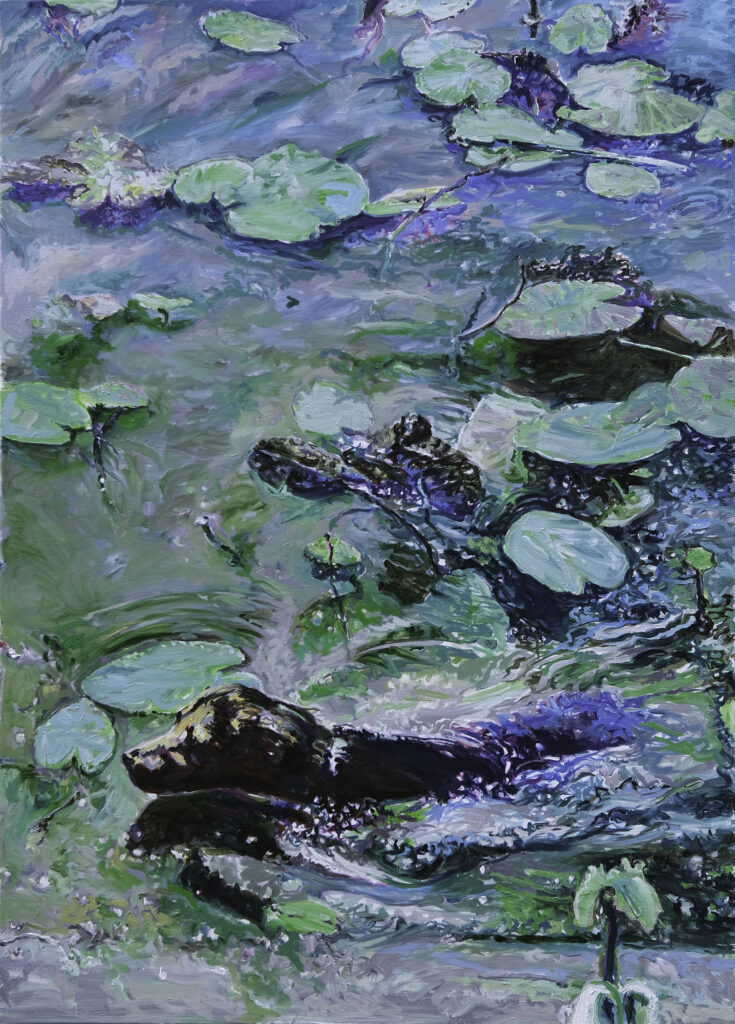
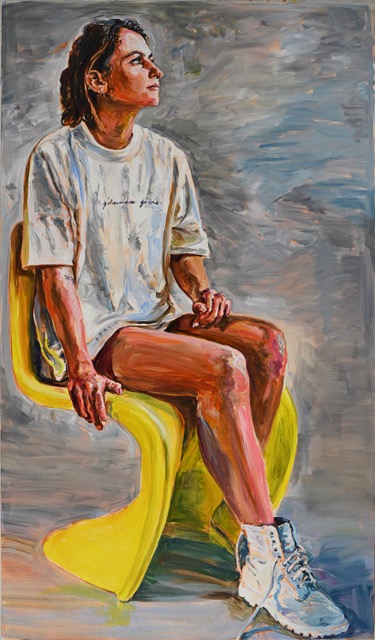
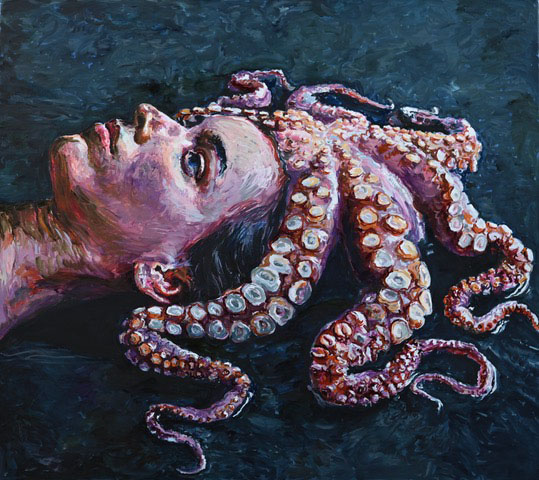
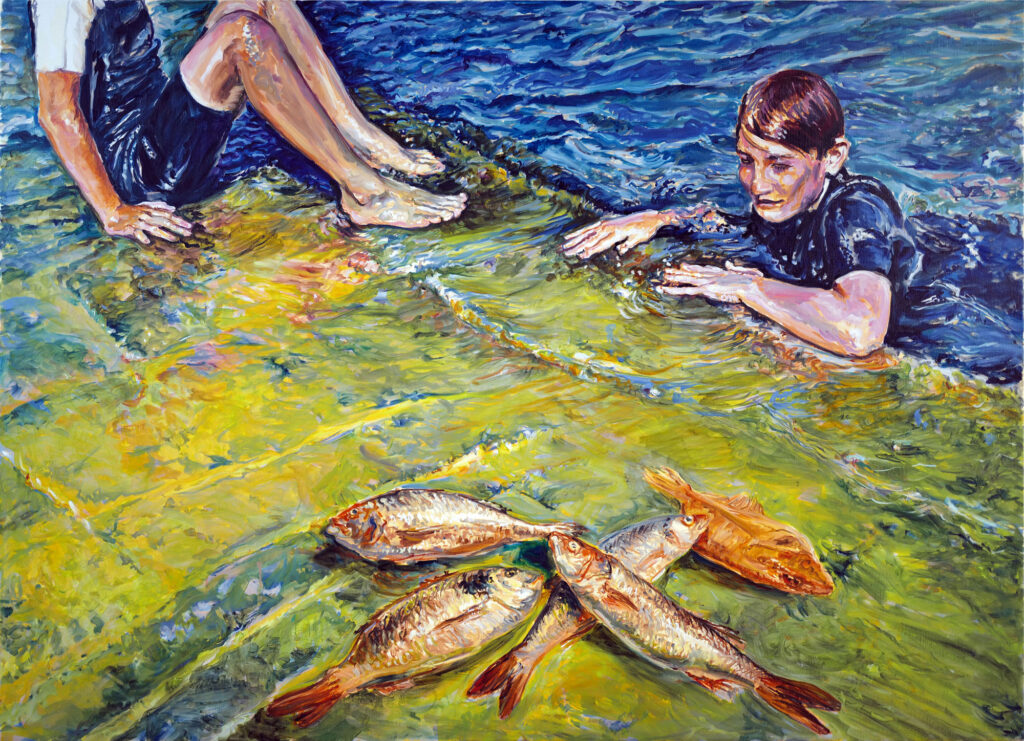
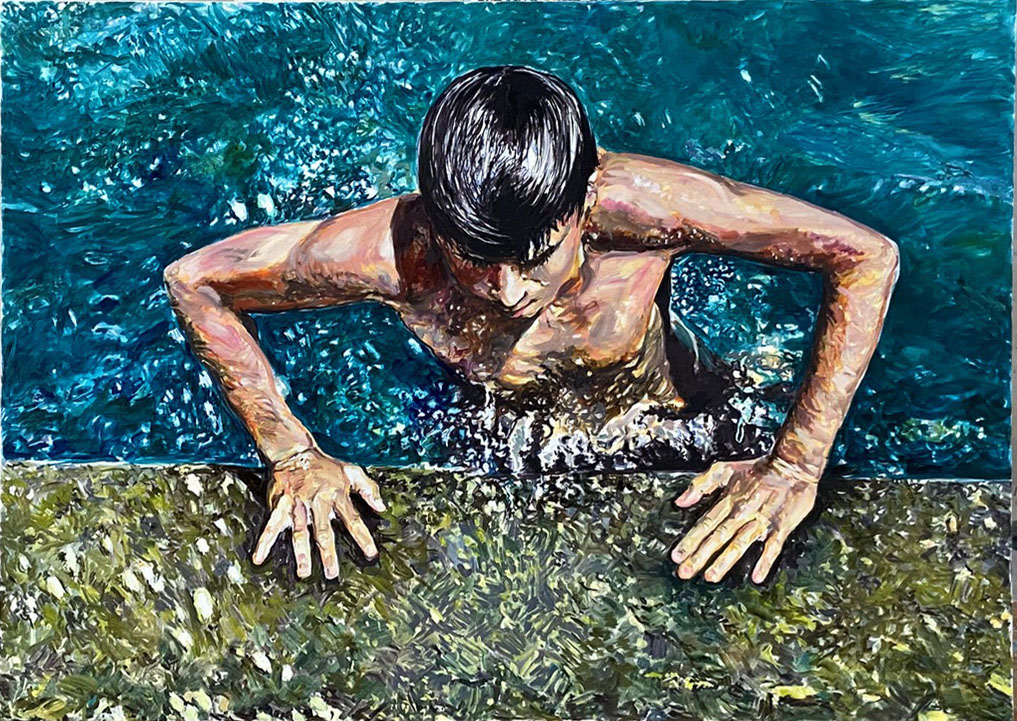
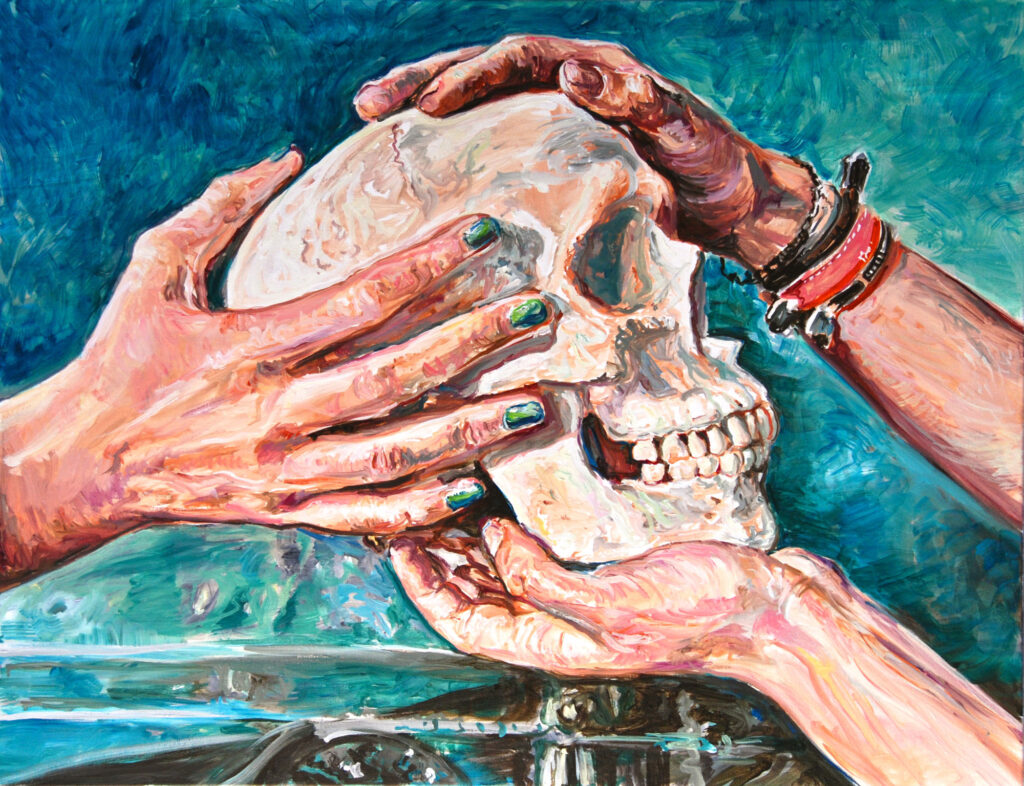
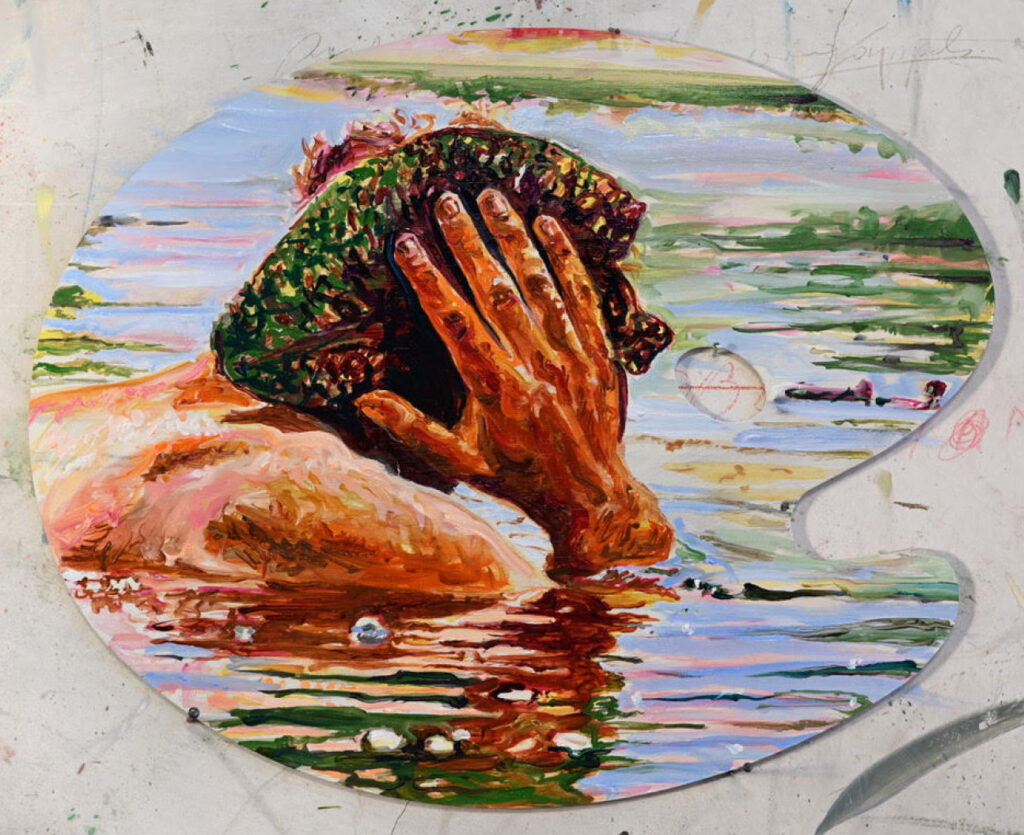
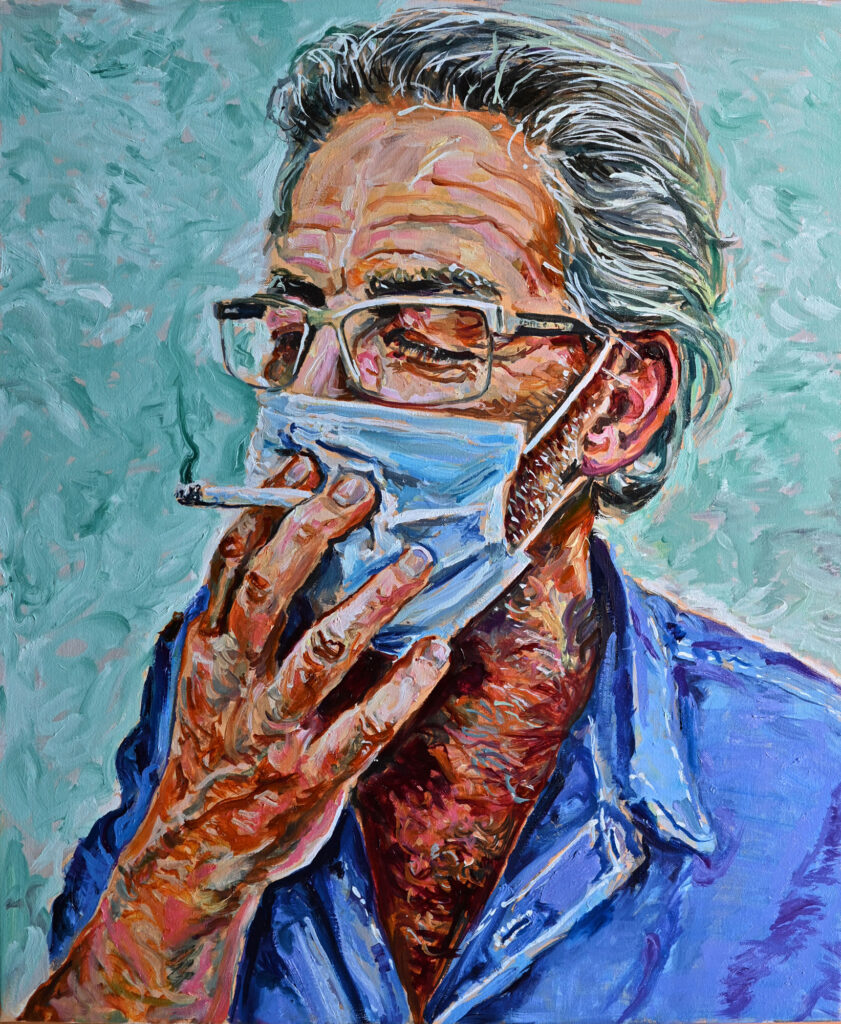
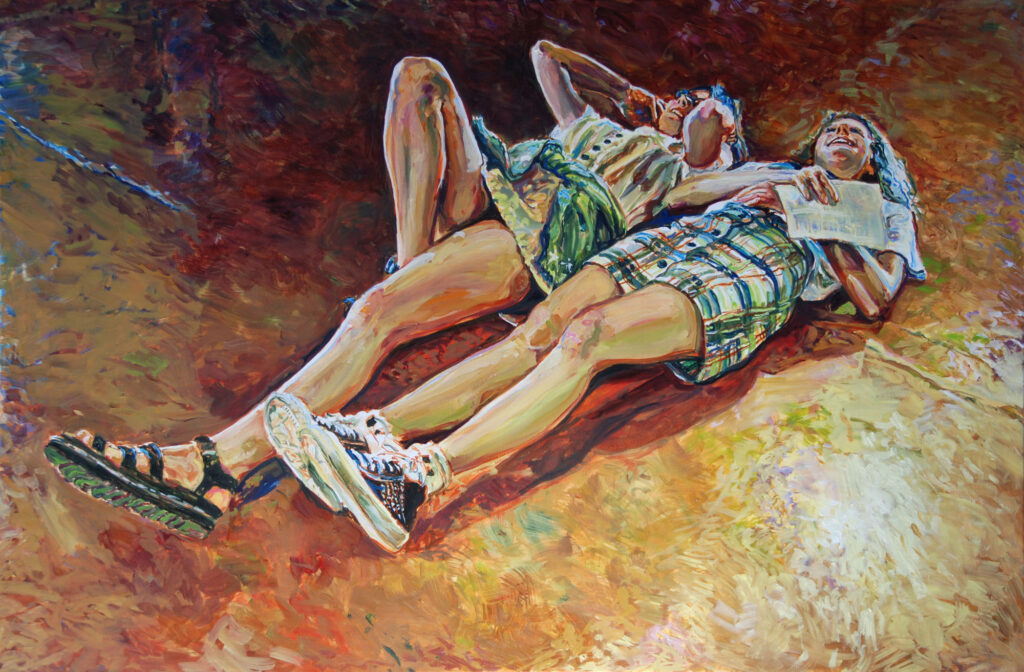
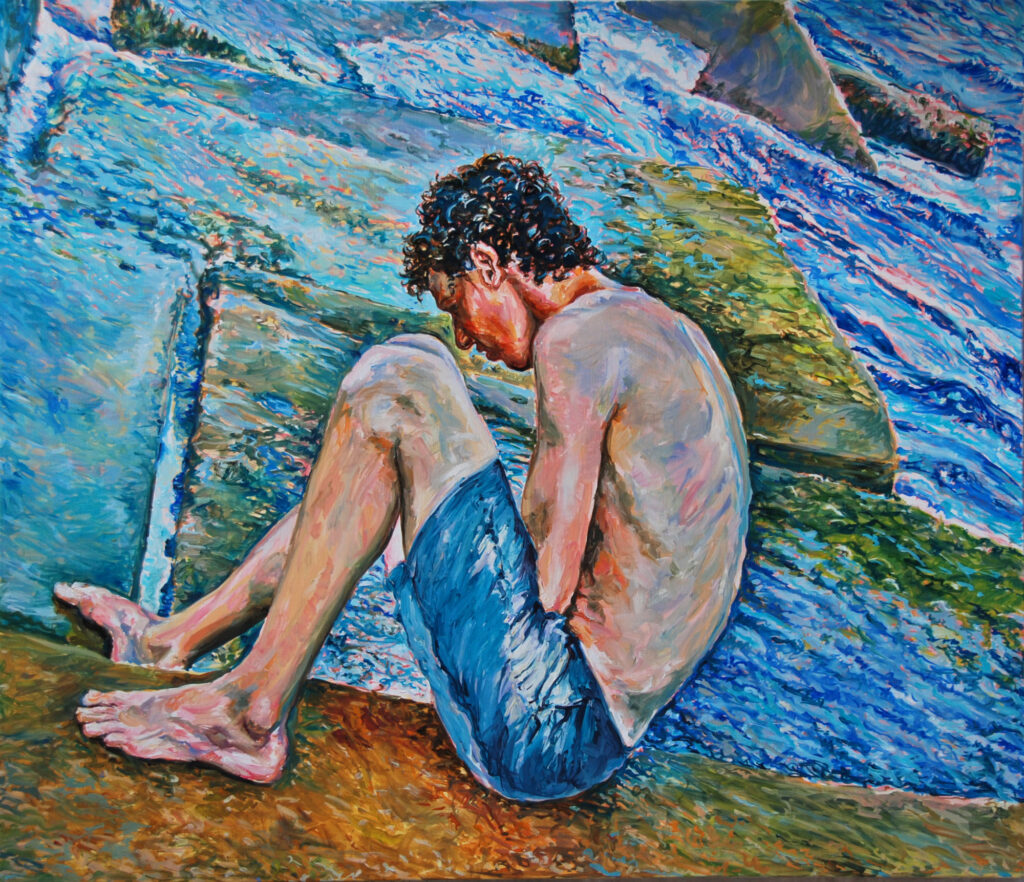
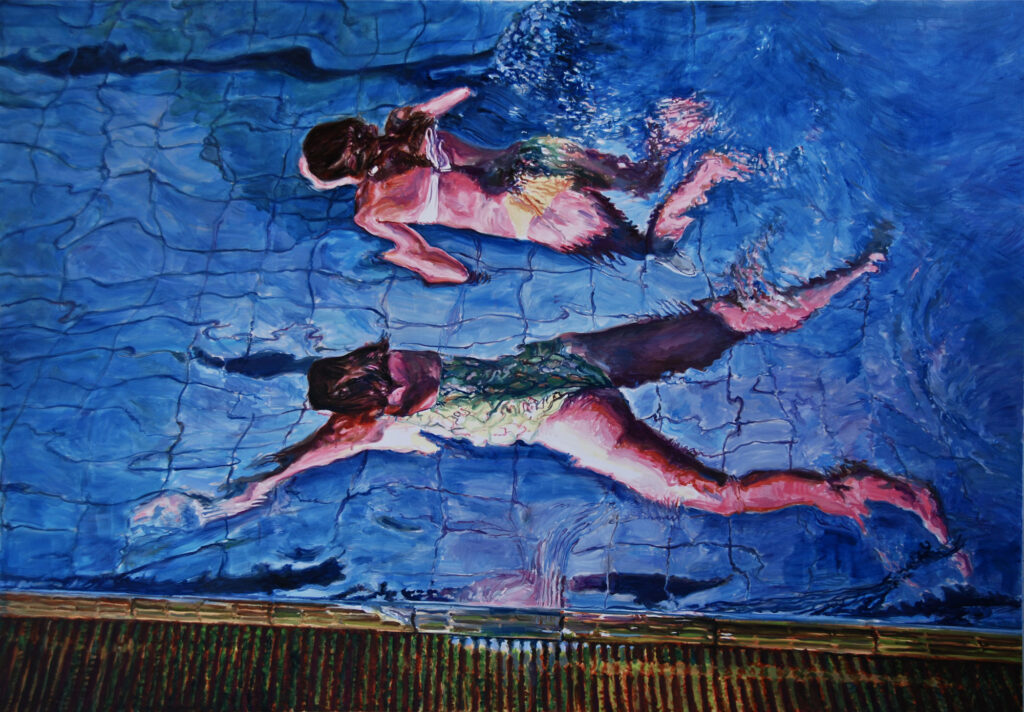
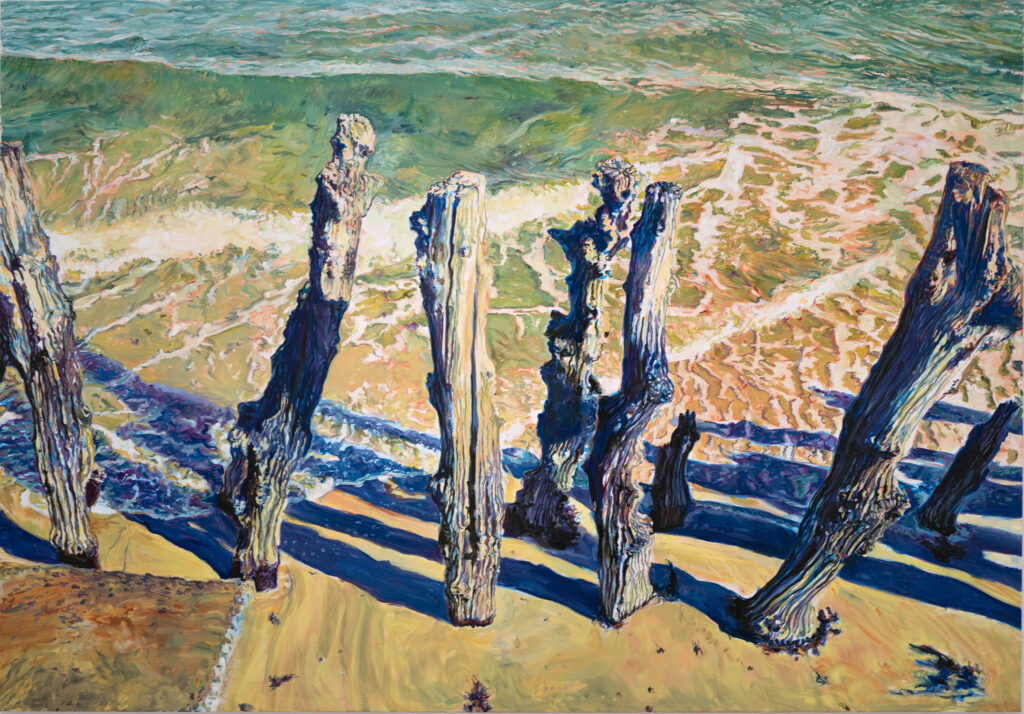
Faculty Club Leuven, until 31.12.2021
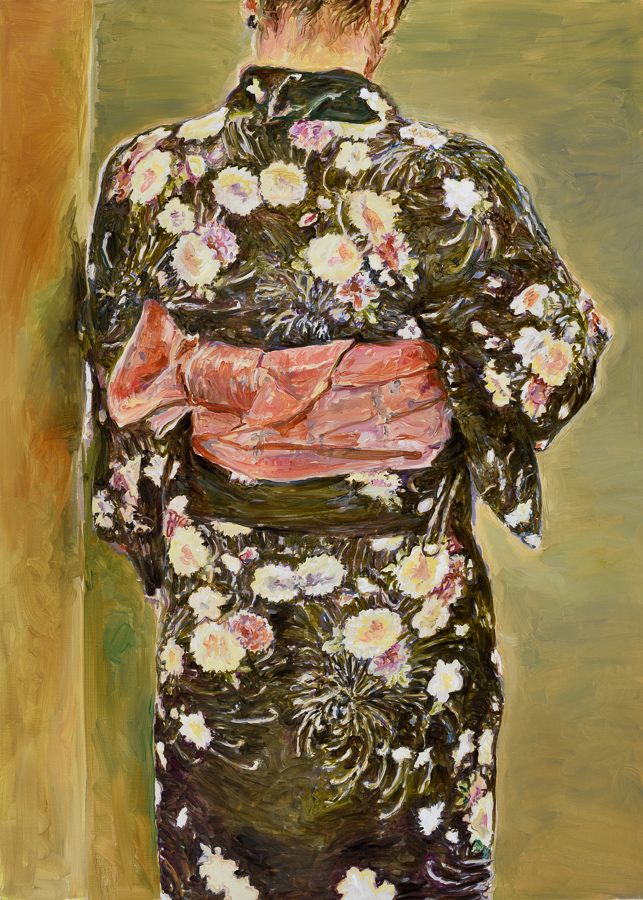
7.900 €
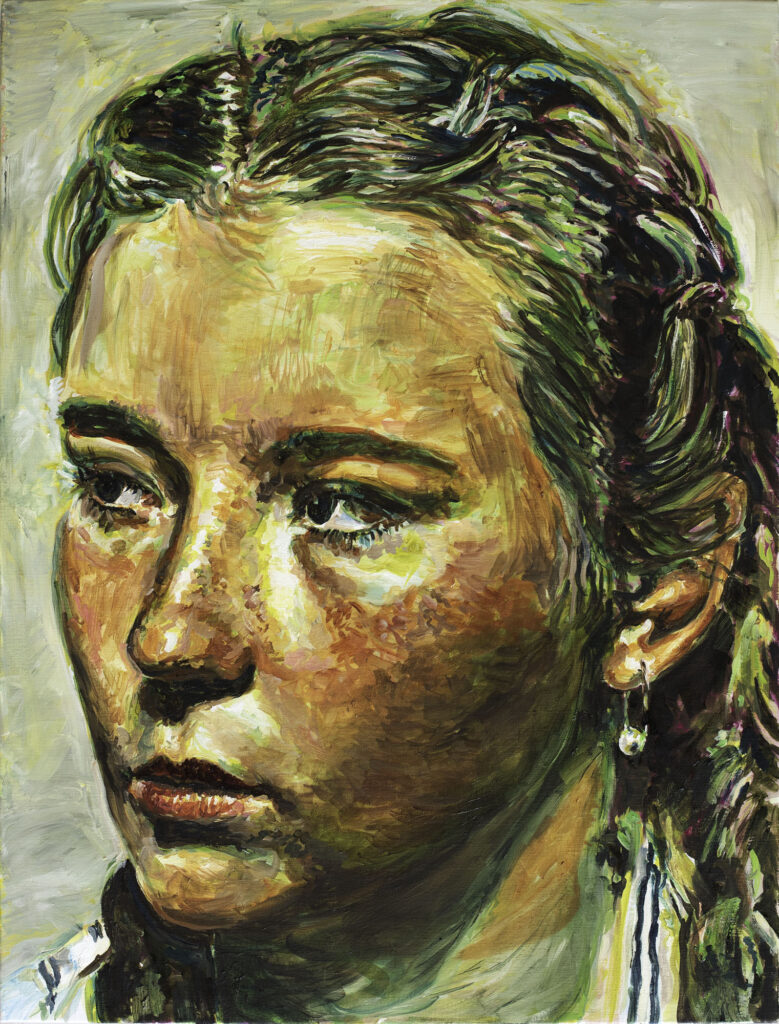
5.300 €
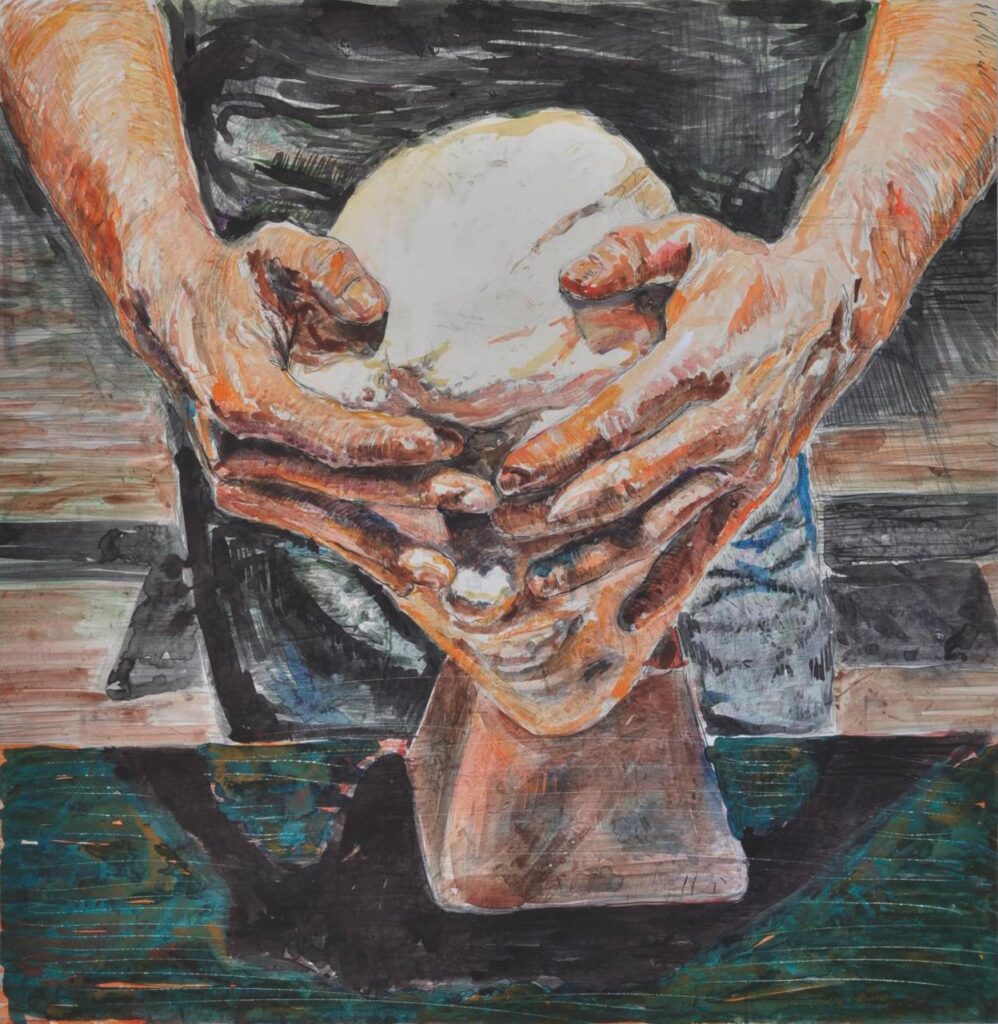
3.600 €
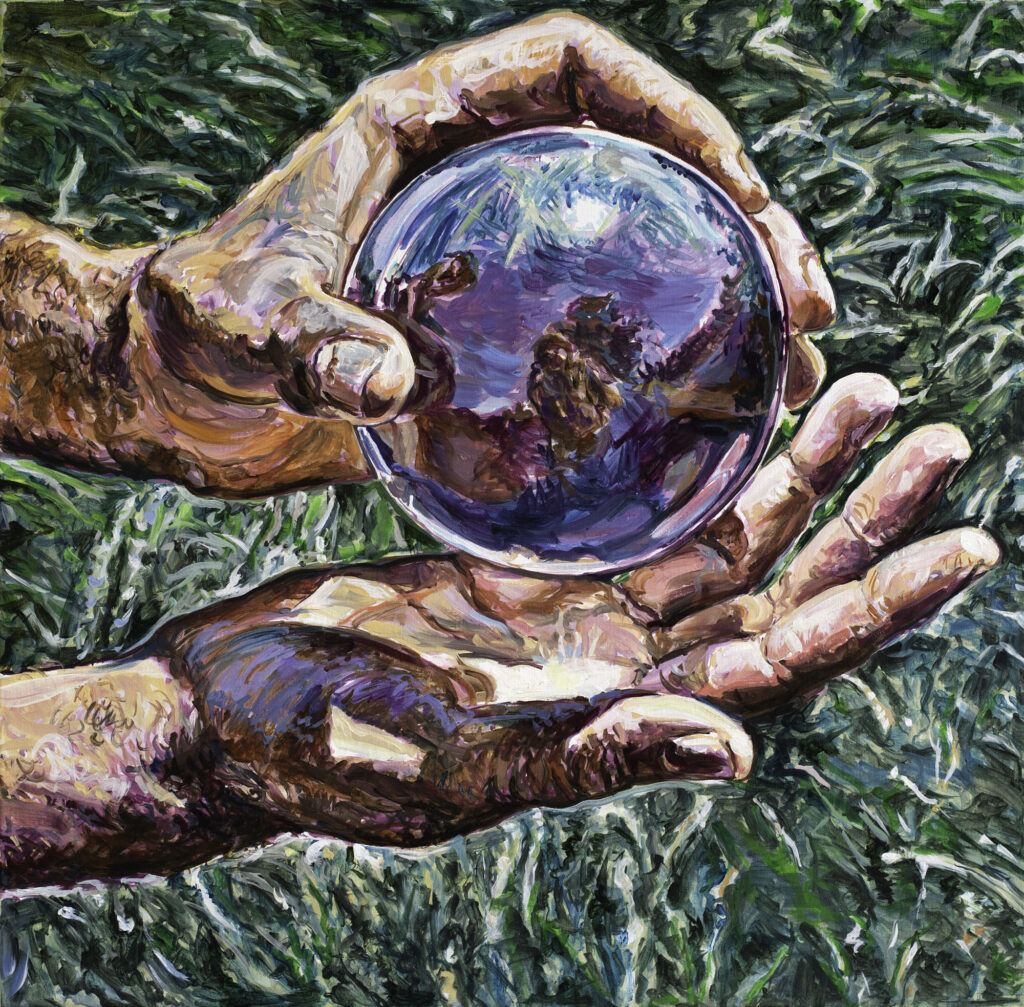
5.000 €
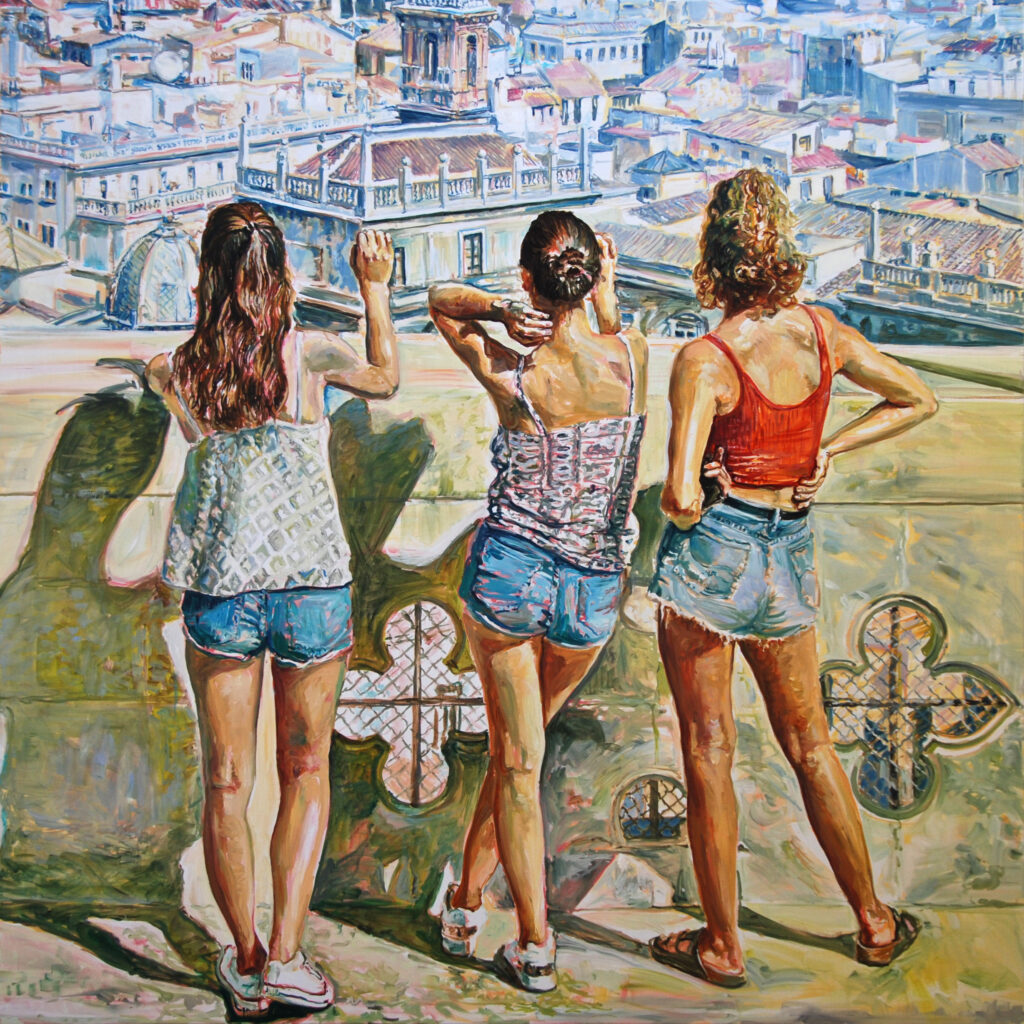
Luc Dondeyne (Genk, 1963) heeft het laatste decennium een zeer persoonlijke picturale schilderstijl ontwikkeld, die overeenkomsten vertoont met het negentiende-eeuwse impressionisme. Zijn werk wordt gekenmerkt door trefzekere, nonchalant geborstelde verfstreken in uitgesproken kleuren die als puzzelstukken fungeren voor het totaalbeeld. In tegenstelling tot de schilderkunst van de Franse impressionisten heeft het werk van Dondeyne een sterk verhalend karakter, waarbij de dagelijkse realiteit en de hem omringende werkelijkheid centraal staat. Hij bewandelt de dunne scheidslijn tussen doorgedreven observatie en subtiel voyeurisme in werken die onmiddellijk herkenbaar zijn, maar tegelijkertijd een bevreemdend element hebben: er schuilt iets onbestemds in de ogenschijnlijke trivialiteiten die hij vastlegt. Dondeyne daagt de toeschouwer uit om verder te kijken dan het geschilderde tafereel, zodat de gepresenteerde werkelijkheid op de voorgrond treedt. De unheimliche, donker-melancholische sfeer in zijn schilderijen draagt bij aan de confronterende realiteit van het verhaal en maakt zijn werk zowel persoonlijk als universeel.
In the last decade Luc Dondeyne (Genk, 1963) has developed a very personal, pictorial style of painting, which bears a resemblance to nineteenth-century French impressionism. His work is characterized by deliberate, but casual brush strokes in expressive colors that form pieces of a puzzle which only manifests itself from some distance. Unlike the art of the French impressionists, Dondeyne’s work has a narrative character, focusing on the twenty-first century daily reality as encountered by the artist. He carefully balances vigorous observation and subtle voyeurism in works that are recognizable as well as alienating: there seems to be something not quite right about the trivialities he depicts. Dondeyne challenges the viewer to look past the painted scenes and consider the reality they represent. The eerie, melancholic atmosphere in his paintings contributes to the confronting realism of the narrative and ensures that his work is personal as well as universal.
There are quite a few paradoxes in Luc Dondeyne’s paintings.
On the one hand they’re figurative, easy to read, and the images are directly derived from the recognizable reality that surrounds us. It’s as if they want to please the spectator, be-cause Dondeyne—at least at first sight—shows attractive people, sometimes partially un-dressed, who are either in a sort of holiday mood, or engaged in musing, posing, looking or carrying out everyday actions.
Yet, there’s more to it than meets the eye at first sight. For example, the palette the artist uses, is rather odd, to put it mildly. In the work of, let’s say the past decade, Dondeyne uses what I’d like to call ‘intense colours’. One feels inclined to refer to an overexposed reality, but that’s not really it. Neither—or at least not always—does Dondeyne paint scenes with a scorching sun. Nor does he use a contre jour technique to create sharp contrasts. (…) What we really see in these paintings is an intensified reality the painter engraves on our retina through the use of intense, sparkling, vibrant colours. Quite rightly some authors have pointed to the fact that Dondeyne continues the heritage of impressionism. He deliberately intensifies the palette of the impressionists and makes full use of the scientific understand-ing that colours are mixed in our brain.
His also goes beyond the famous stripe technique used by some impressionists. Often the stripes turn into waves and arabesques, or even small vortexes of paint. This results in an intense, slightly strange and alienating image that ‘bites’ into our gaze and because of the whirling brush strokes seems ‘frozen’ in an eternal movement… That, too, is of course a paradox. [Eric Rinckhout}
2018 – 2020
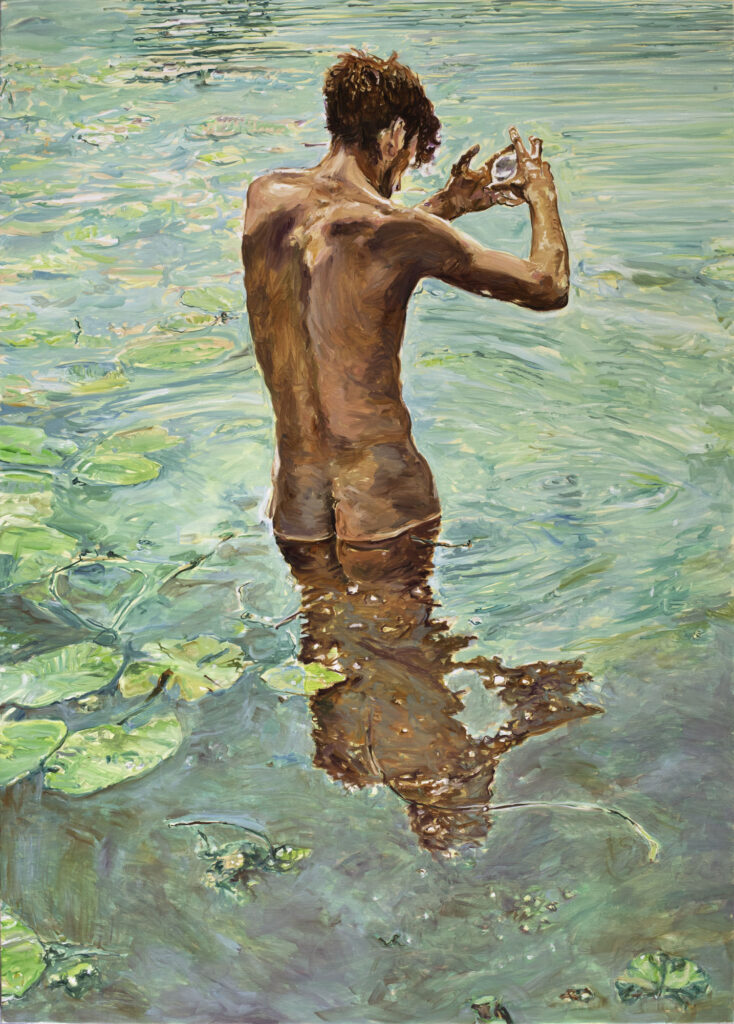
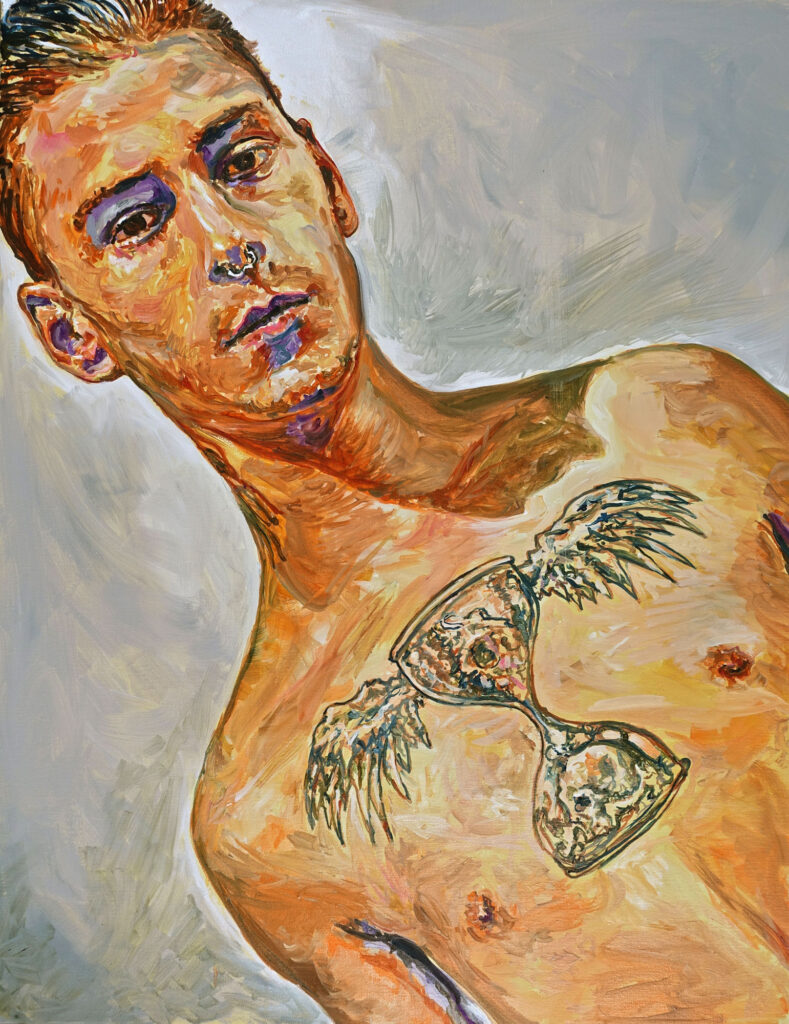
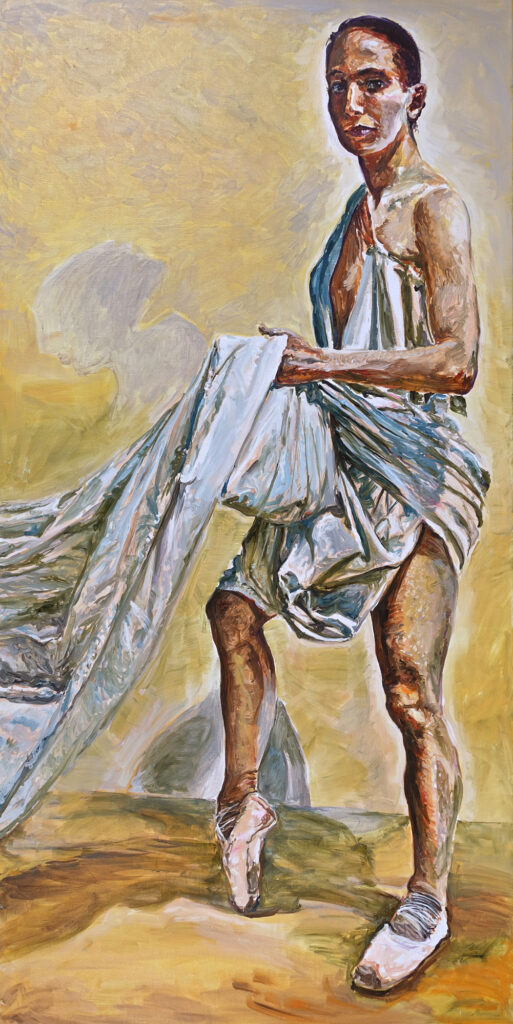
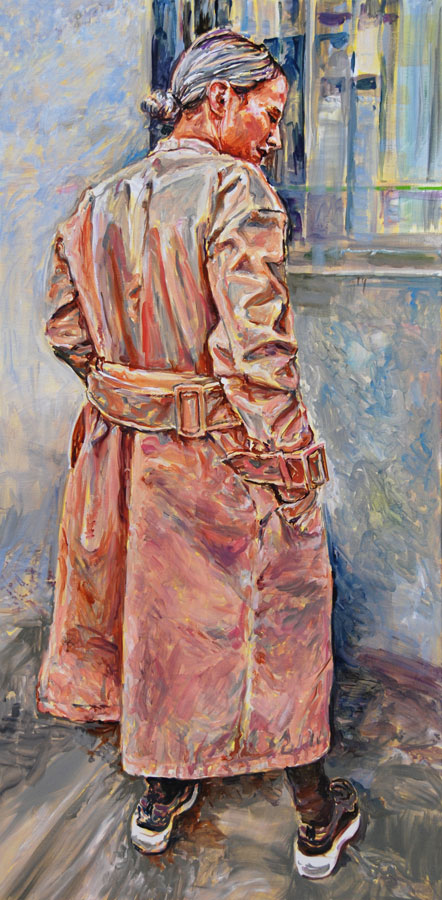

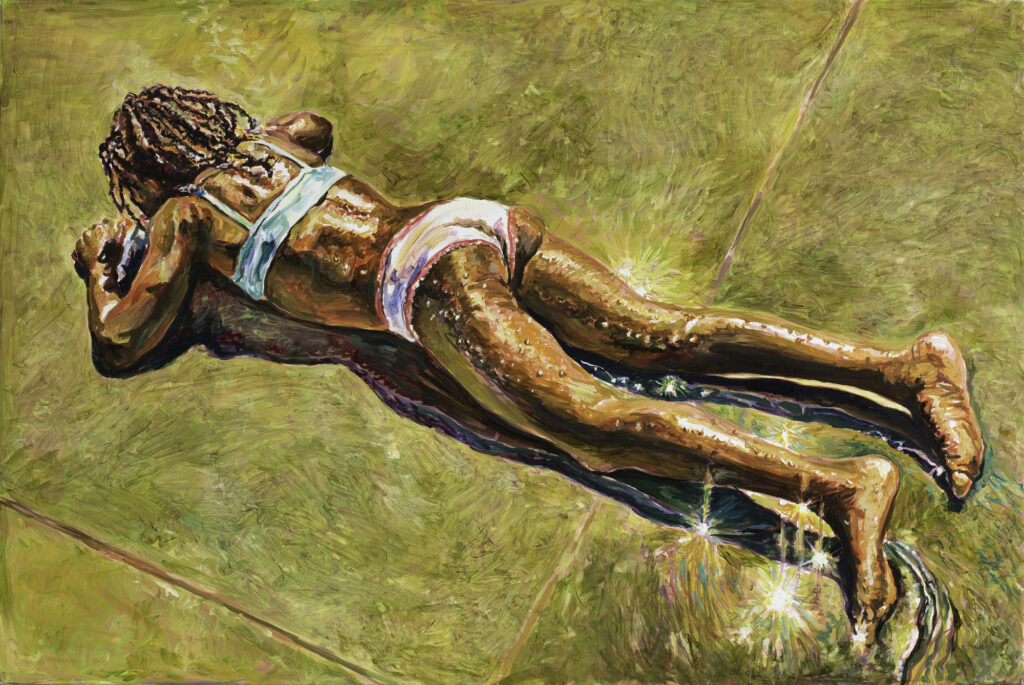
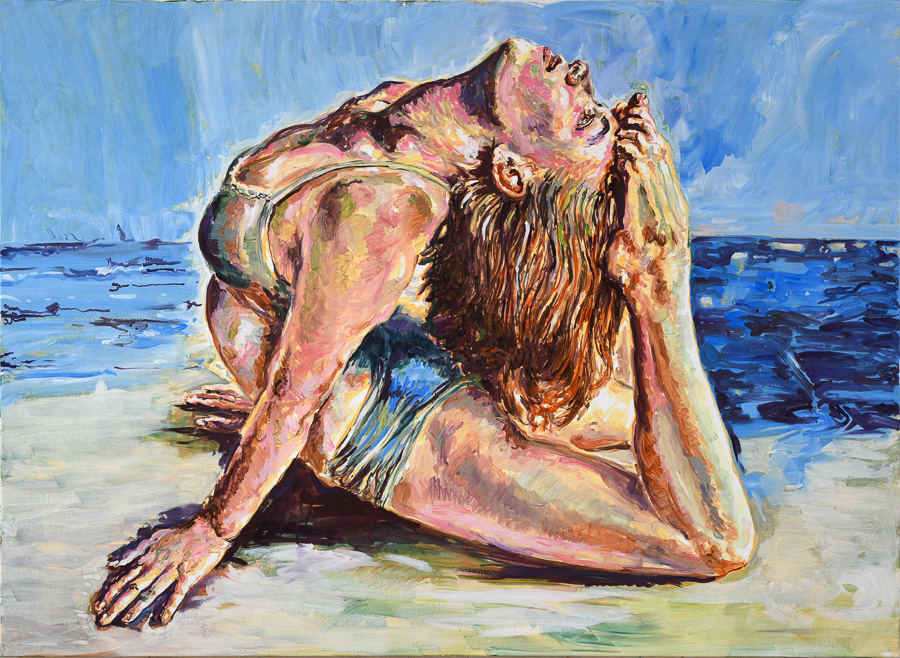
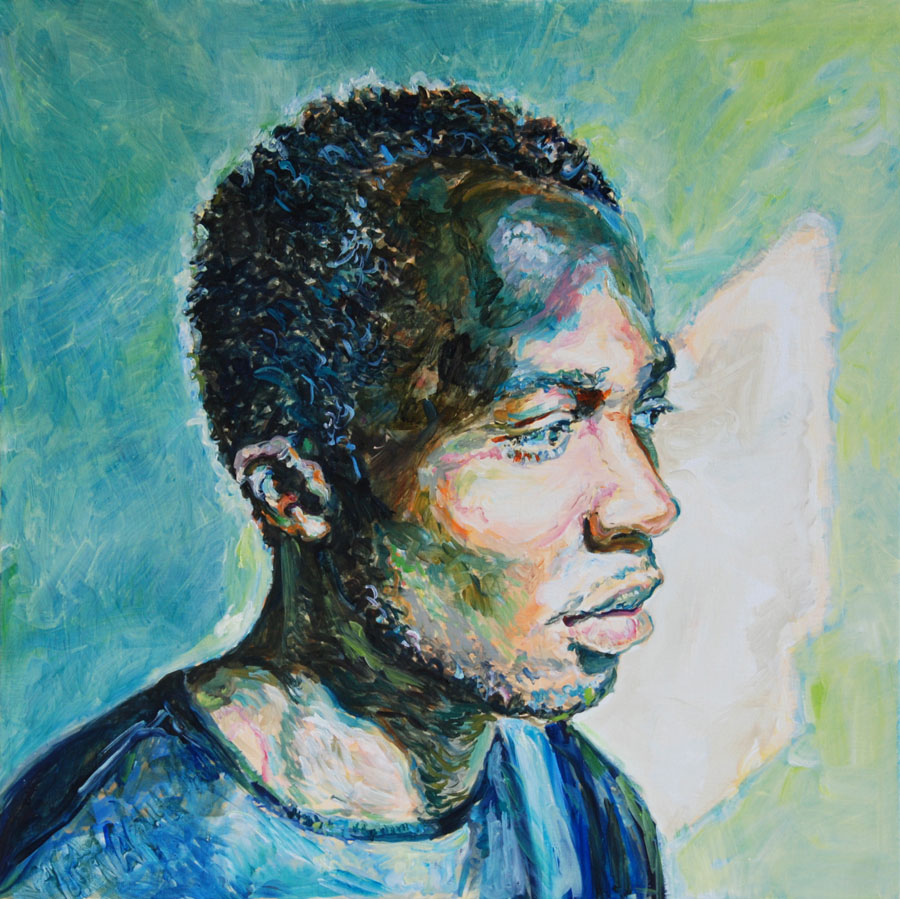
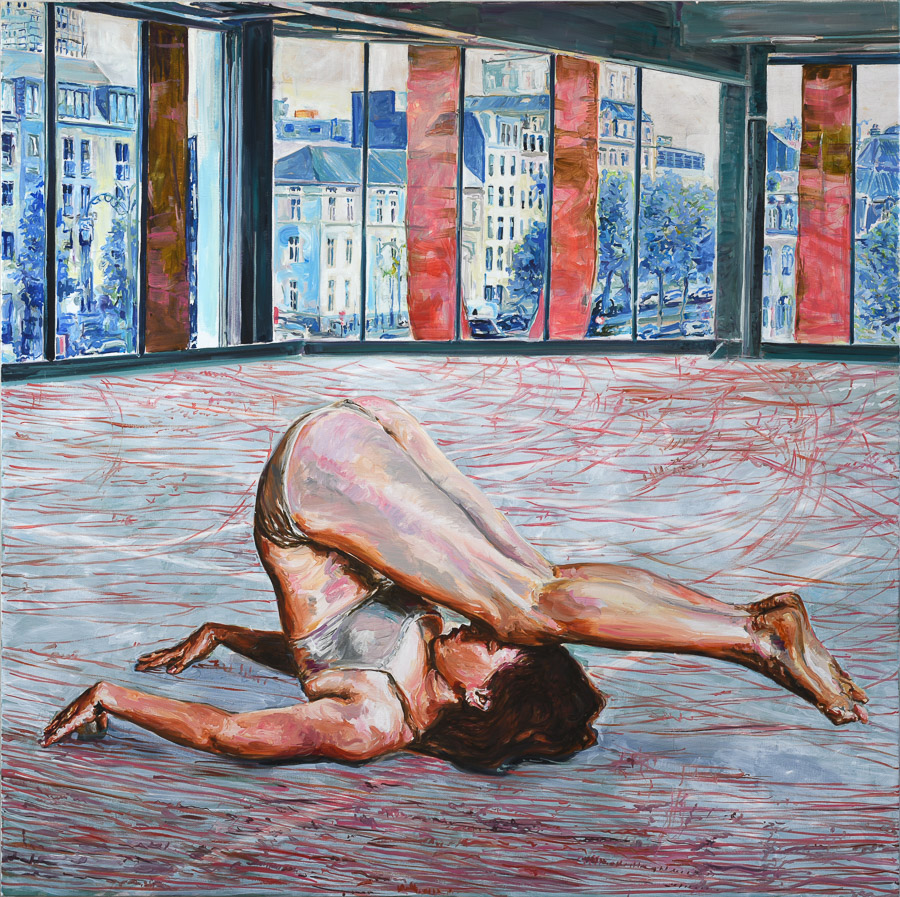
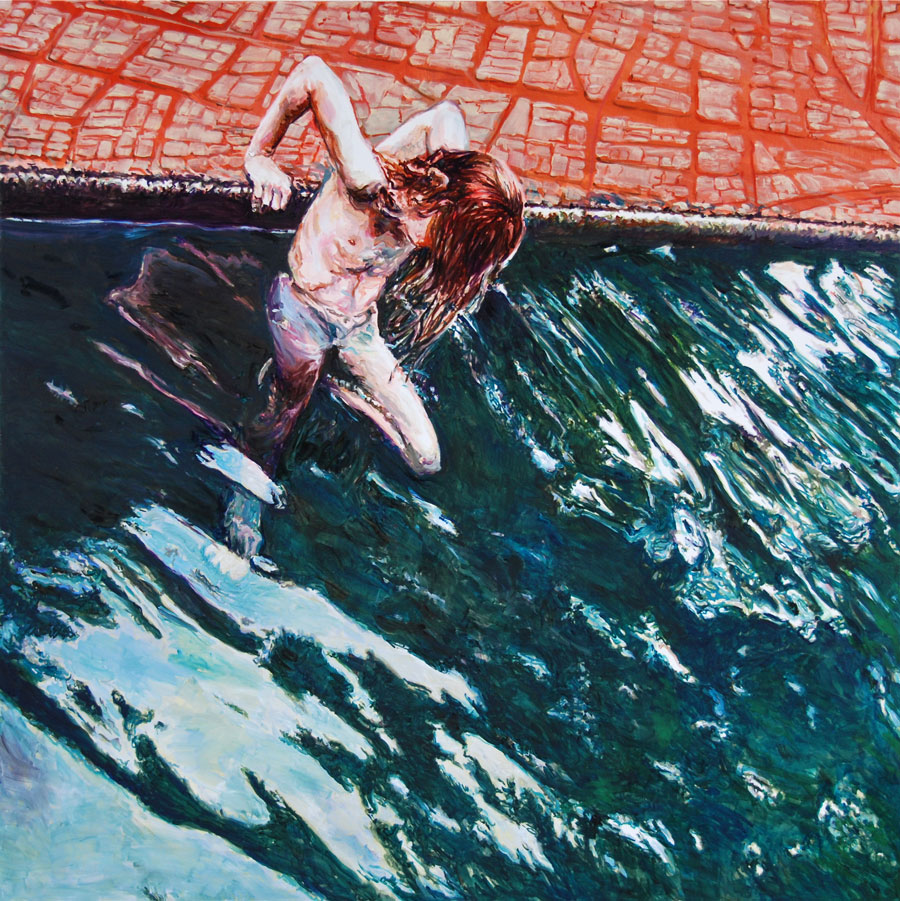
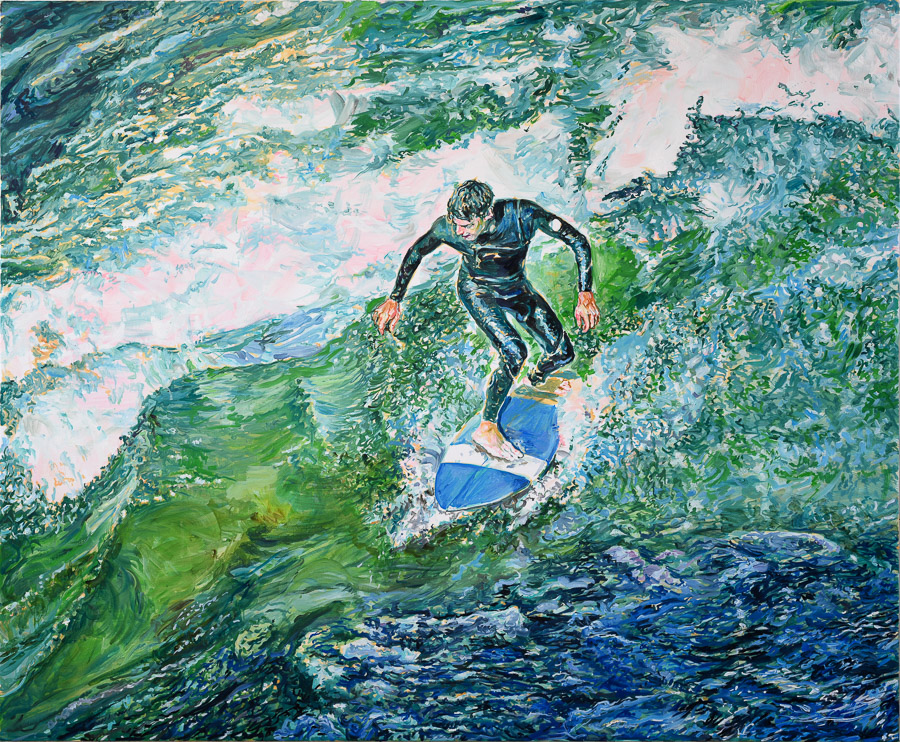
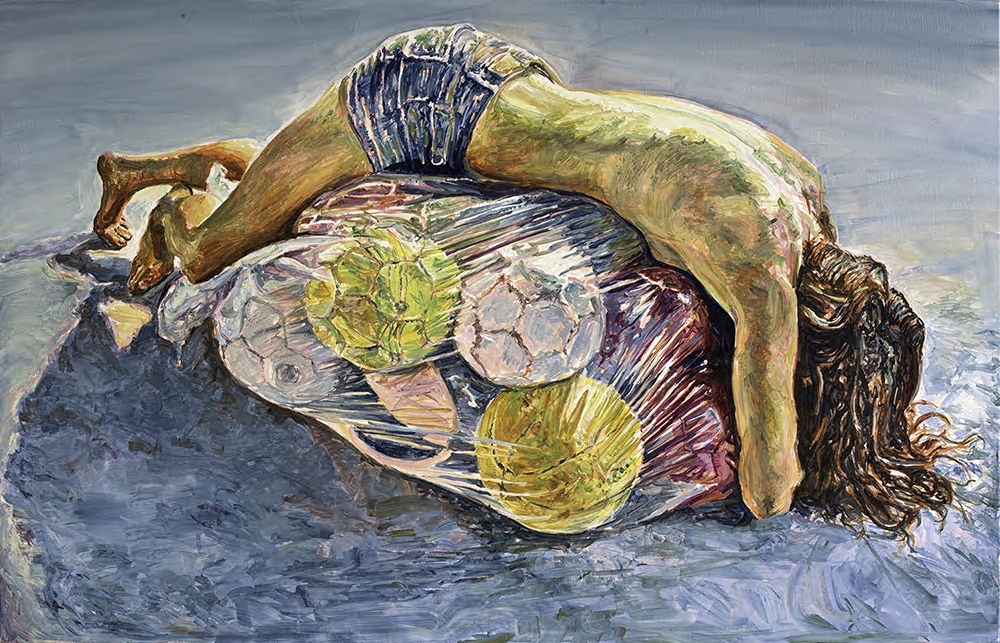
2015 – 2016
